

Best places for your first time in Latin America if you don’t speak Spanish

Sometimes, I use affiliate/sponsored links with my recommendations, which if bought through might earn me a few pennies at absolutely no extra cost to you . This helps with the cost of keeping this site alive so I can continue to guide you on your travels. Please remember that I would never ever ever recommend anything I don’t or wouldn’t use myself. Big thanks to each and every one of you who have trusted my recommendations so far! Lozzy x
Travelling to a new place can be nerve-wracking, and when a whole region is your oyster it can be difficult to know where to start. Even for those who have travelled extensively in Asia or Europe, Latin America can present fresh challenges. In fact, it’s a totally different ballgame. We often get asked for the best places for your first time in Latin America if you don’t speak Spanish, and although lots of people worry about it, there are still several options that wouldn’t be a total disaster should you find yourself up the Amazon without a paddle.
After this list of the best places for your first time in Latin America if you don’t speak Spanish, you may also be interested in reading:
- The best places in Latin America to learn Spanish
- How to stop pronouncing these South American place names wrong
- 50+ must-knows for backpacking in South America
If you’re sticking to the touristic centres of capital cities and organised tours, you could essentially pick anywhere for your first time in Latin America if you don’t speak Spanish, but then you would miss out on really getting the flavour of the country you’re exploring.
We do appreciate though that organised tours are still a favourite with lots of people due the ability to really get to know fellow travellers and relax about travel plans, so if you want an immersive group tour we highly recommend checking out G Adventures .
Before we get to the juicy stuff of our list of best places for your first time in Latin America if you don’t speak Spanish, we’re going to give a little comparison of how language can affect your experiences in Latin America compared to the other travel hotspot, South-East Asia.

How is travel in Latin America different to South-East Asia travel?
While the culture of South-East Asia might actually be more different to what we’re used to in Europe or North America (where most of our readers are from!), we see the main factor in what makes Latin America distinct as being the striving to speak a common language.
In Europe or Asia, where almost every country has their own language built up over thousands of years of history, it becomes more important to find a common language, and adapting to the English-speaking world’s language and culture has become a way to make it in a globally-connected world in terms of business and career success.
English media is more far-reaching due to past empires and Hollywood budgets, and therefore has a greater influence on countries where media in a language that’s only spoken in one nation has a smaller audience and therefore lower budget and reach. Are you still with us?
Skip over to Latin America. Spanish is the common language. This (mostly in terms of number of countries where it’s the national tongue) Spanish-speaking region is a cultural powerhouse in itself. While there are thousands of years of history of indigenous languages, most were wiped out by colonisers, or their modern-day speakers are taught in Spanish at school anyway.

It seems Latin America doesn’t have as much interest in English-speaking media or culture (who needs to look outwards when you have Reggaeton?!). Domestic tourism from an emerging middle class within the region is on the rise, and that’s still where some countries focus. They don’t see the need to look to other regions for economic gain as heavily as much of the rest of the world, nor is there particular excitement about Western culture or media compared to other continents.
If you’re travelling in South-East Asia you can’t and won’t be expected to learn Tagalog for your 2 week stay in the Philippines, then Thai when you visit Thailand for 3 weeks, then Khmer while you pop into Cambodia, so you come to expect that the locals in (and even outside) the tourism industry will cater to you and speak the international common language of English. Some tourists may even complain if there are no English-speaking staff to help them.
While there are cultural confusions and communication cock-ups all over the Asian continent, people do generally try and make things easier for you as an English-speaker, and at least understand and giggle when there are no common ways to communicate.

However, your experience when you travel around certain parts of Latin America if you don’t speak Spanish might be that people will find it strange and perhaps even rude if you don’t know any of their tongue. After all, you’re in their country, hoping they mig
ht they speak your language?! Our feelings of entitlement as English-speakers simply don’t matter here.
And that can all have several knock-on effects on your experience as a traveller during your first time in Latin America if you don’t speak Spanish (even in Brazil you can just about get by with understanding each other in Spanish, and many locals will speak it as an advanced second language in border states).
It’s quite normal for tours to only be run in Spanish or Portuguese, for museums not to have any placard translations, and for managers of your accommodation to speak little to no English, depending on how urban the place is.
It is noticeable that the average age of travellers in Latin America is higher than those in Asia, especially South-East Asia which has a sort of a backpacking-for-beginners type vibe in places. Latin America is often seen as a more challenging region for travel, and having seen both we would have to agree in most instances.
There is generally a heartwarming effort amongst mid/long-term travellers in Latin America to take the time to learn at least survival Spanish . Just a few friendly phrases can make the difference!

But hope is not lost if you don’t speak Spanish in Latin America!
Don’t let this put you off your travels to this incredible region! there are some places for your first time in Latin America if you don’t speak Spanish that will be easier than others. We want you to have the best experience of this breath-taking region, and sometimes that means not throwing yourself completely in the deep end. Sooooo, we’ll finally reveal the list we’ve put together our recommendations of the best places for your first time in Latin America if you don’t speak Spanish.
If you would like any further information on these destinations, check out our country travel guides , or feel free to get in contact with us directly to ask any questions! We also suggest that you check out our post on how to pronounce Spanish place names for when you head out to this part of the world.
The best places for your first time in Latin America if you don’t speak Spanish
Having a wonder of the world on your turf comes with great responsibility. And the Peruvians have succeeded in creating tourism infrastructure that can handle the demands of international visitors in their thousands, making it a sure favourite in our list of best places for your first time in Latin America if you don’t speak Spanish.
Though English isn’t always spoken in places, the strength of their catering to tourism means that it’s harder to go wrong and end up in the middle of nowhere, dressed in a poncho and surrounded by llamas (doesn’t sound that bad, actually). Services such as PeruHop make this even easier.
Don’t miss in Peru: Machu Picchu , Huacachina
Check out our 2 weeks Peru itinerary here .

We see this as Latin America for beginners. While some (ok, I) think it’s compromised its feeling of authenticity, Costa Rica has sort of turned itself into the perfect destination for a short holiday, and therefore one of the best places for your first time in Latin America if you don’t speak Spanish.
Yes, they charge prices that are expensive enough to make a seasoned travellers’ eyes water, but juuust low enough that a North American or European thinks it’s cheap compared to home, and they play up ‘pura vida’ to get the foreigners excited (the expression ‘pura vida’ comes from a Mexican film in the 1950s, by the way).
BUT they’ve invested a huge amount into creating experiences that last a lifetime, and as long as you take pricey shuttles and don’t even attempt to look at public transport routes, you’ll find Costa Rica very easy to navigate as a non-Spanish-speaker.
Don’t miss in Costa Rica: Santa Teresa, Puerto Viejo
We don’t have any Costa Rica blog posts yet, but here’s a comprehensive Costa Rica bucketlist by a fellow wanderluster, and you can be sure that G Adventures have certainly got you covered for group travel options !

In the main tourist areas ( Montañita , Quito, Baños, Galapagos Islands) there is actually a fair amount of effort made to try and speak English. Tourism is huge business for Ecuador, and the route that most tourists follow is fairly etched into the map, so the tourism infrastructure in those places tends to be well established. As a bonus, the currency in Ecuador is US dollars, so you don’t have to think too much when buying things 😉
Don’t miss in Ecuador: Route of the Waterfalls in Baños , the Galapagos Islands if you can afford it!
Check out our 2 weeks Ecuador itinerary here .

Bonus entry: Belize
Well, Belize is by definition not included in Latin America because it has English as an official first language, but it has just as much fascinating culture and just as many breath-taking landscapes so it would be a crime not to mention here! Belize is a stunning piece of the heart of Central America, famous for its many islands and otherworldly diving spots.
Things are more expensive in Belize, and the country is small, so most people only spend 7-10 days here if they’re budgeting for a longer trip. If for your first time in Latin America you’re really worried that you don’t speak Spanish, combining Belize with an organised tour into Guatemala (Flores/Tikal) or Southern Mexico, such as Tulum could be a good way to beat that anxiety.
Don’t miss in Belize: Caye Caulker (pronounced ‘key corker’) and the Great Blue Hole
Check out our Belize posts here .

Tranquilo, you’re gonna be fine!
As long as you go in with the right expectations, you don’t have to worry about your first time in Latin America if you don’t speak Spanish. New tourism infrastructure is set up every day in each country, with plenty of organised tours, tourism transport routes, English-speaking accommodation, ticket offices, and guides to be found.
You don’t have to limit yourself to this list by any means, but we hope that these best places for your first time in Latin America if you don’t speak Spanish can help you if you’re feeling anxious about getting around and feeling safe amidst a language barrier. If you want to consider other countries that are more challenger for a non-Spanish speak, read up on our Latin America country summaries to see which would suit you best.
If you’re interested in picking up the language while you’re in this region, do check out our best places to learn Spanish in Latin America .
- How to learn Spanish from home as an adult
Liked this post on the best places for your first time in Latin America if you don’t speak Spanish?
Save it as a pin on Pinterest to read it again later!

Last Updated on 30 January 2023 by Cuppa to Copa Travels
Read these posts next!

Bitesize LatAm: Which country to visit in Latin America?

The best cities in South America for history lovers to travel to

The top 5 national beers in South America
9 thoughts on “best places for your first time in latin america if you don’t speak spanish”.
belize is the last destination for most people. and they don’t live there. enjoy.
Leave a comment :) Cancel reply
Do You Need To Speak Spanish to Travel South America?

If you are planning on backpacking South America, you might be wondering – “Do I need to speak Spanish?” Lee and I have been in South America for the last three months and in this post, we will share our first hand experiences with you regarding speaking the language.
Unlike many other destinations in the world where my answer would be, “no, you don’t need to learn another language.” – when it comes to South America I would recommend doing your best to build a basic level of Spanish. It will make your travels a lot easier and it’s not as difficult as you might think.
The Worldwide Prevalence of English Makes Us Lazy
As native English speakers we are lucky in a way, because our language is probably the most universally spoken around the world. Lee and I have travelled all over Southeast Asia and Europe and in every country we have encountered English speaking hotel and restaurant staff, tour guides and locals. We ordered food from menus translated into English and watched films with English subtitles. So far, we have been able to visit over 25 countries without having to learn another language.
This is a blessing in a way, because it makes travelling very easy for English speakers. However, it is also a curse because it makes us lazy when it comes to learning new languages.
Being in a situation where you have no choice but to attempt the local language is usually the only way that you will push yourself out of your comfort zone and give it a try.
Communicating in a second language is hard, so unfortunately if there is an option not to – we will simply speak English to make things easier.
A Little Spanish Goes a Long Way in South America
So if you are wondering, “should i learn spanish before travelling in south america” – the answer is yes..
I would recommend at least learning a very simple vocabulary, preferably one related to numbers, food, accommodation and the basics. In comparison to other countries where English was enough to get around, I have found that isn’t the case in South America. Depending on where you are, you might encounter hotel and restaurant staff who speak English – but a lot of the time you will not.
I can guarantee you that you will encounter people with little to no English – so you will want to be able to at least make your basic needs understood to them.
However, you don’t need to be completely fluent before you travel to South America! By all means, do not postpone or cancel your South America trip just because you can’t hold a conversation in Spanish. It’s not necessary to be an expert before you go, all you need is a base to start with and you will be surprised by how much you will pick up as you go along.
What Are the First Things to Learn?
So if you only have a short time before your trip backpacking around South America, what should you focus on learning in Spanish before you go? Here are some of the most important things I have found to serve me well in my first few months here:
The Polite Words
Politeness goes a long way. Above all, the first words that you should learn in any language are Hello, Thank You, Please, and I’m Sorry. In Spanish they are Hola, Gracias, Por Favor and Lo Siento. Also, say “Perdón” if you bump into someone or need to squeeze past them.
One of the first things to learn are your numbers, because you will need to be able to ask ¿Cuánto es? (How much?) and understand the reply. This is important when asking the price of hotel rooms, souvenirs in the market, or anything else you want to buy.
Numbers from 1-100 in Spanish
In many restaurants we have been in so far in Peru and Bolivia, there hasn’t always been an English version of the menu. It is helpful to have a basic vocabulary of food and drink words so that you know what you are ordering and can ask for it in Spanish.
BBC Spanish Vocabulary – Food and Drink
Accommodation
Along with speaking to waiters about food, your other most common interaction with locals when travelling in South America will be with the receptionist at your hotel or hostel. You should know some helpful phrases, such as:
Do you have a room for two people? – ¿Tiene una habitación para dos personas?
How much per night? – ¿Cuánto por noche?
Is breakfast included? – ¿Está incluido el desayuno?
Do you have wifi? – ¿tiene wifi?
More Spanish Hotel Vocabulary
Answering Where You Are From
In my experiences so far, one of the most common questions that people ask me is where I am from. People are friendly and curious about foreigners, so they will naturally want to know which country you hail from.
When they ask you the question, they will either say “¿De dónde eres?” (where are you from?) or “¿Qué país es usted?” (what country are you from?)
Since I am from Canada, I answer either “Soy canadiense” (I am Canadian) or “Yo soy de Canadá” (I am from Canada). Find your nationality on this list to figure out what you would say.
Explaining That You Don’t Speak Much Spanish
I have often asked a simple question in Spanish, only to receive a complex response spoken in rapid fire which leaves me completely bewildered. It is important to be able to explain to people that you have a very very basic command of the language, so they should speak to you like they would to a three year old. As soon as most people realise that you don’t speak Spanish well, they will simplify their message and use more body language – which makes it much easier to grasp what they are trying to tell you.
Some great phrases for this are:
Slow down, please – Mas despacio por favor
I speak very little Spanish – Yo hablo muy poco español
Sorry, I don’t understand – Lo siento, no entiendo
Repeat, please? – Repita por favor
Tips For Getting By on Very Little Spanish in South America
When I first arrived in South America, I spoke very little Spanish. I had taken a few classes, but I was nowhere near fluent. How did I make up for my lack? Here are some tips to keep in mind:
- Smile and be patient. The right attitude goes a long way and people will take more time to understand you and help you if you are pleasant to them.
- Write it down. Carry a notepad with you and write down numbers or names to avoid confusion. For example, the word for 13 (trece) sounds a lot like the word for 3 (tres), so writing it down will avoid confusion about price later.
- Listen for the words you know. For example, Lee and I walked past a restaurant once to look at the menu. The hostess standing outside said something to me I didn’t understand. I said, “Mas despacio, por favor?” and she repeated it slower. I was able to catch the words “diez minutos” (ten minutes). From the context, I figured out that she was telling us that the wait for a table at that restaurant was 10 minutes – even though I didn’t know any other words in her sentence.
- The phrase “¿Cómo se dice ____ en Espanol?” is very helpful. It means, “How do you say ___ in Spanish?” Just point to the object you want to talk about.
- Don’t be afraid to sound a bit like a caveman when you first start out – don’t worry too much about proper grammar. For example, the other day I asked the receptionist of our hostel, “¿Pagar habitación ahora?” which means “Pay room now?” My grammar was Neanderthal-like, but she understood what I meant! The most important part is to get your message across, you will become more refined as you learn.
- Use your body language! Most of communication is non-verbal, so use gestures, facial expressions and pointing to things to help get your point across.
- Get over your nervousness and give it a try! Speaking a language you are just learning is very intimidating, but once you get over your fear of speaking to strangers in Spanish you will learn so much faster. You will make mistakes, but they aren’t the end of the world so don’t worry. Think about it, if someone was learning English and they made a mistake, would you hold it against them? Probably not, unless you are a massive jerk.
- Try to learn new vocabulary words as you go along and use them again so that you remember them. The new vocabulary words I have learned in the last few weeks or so include “jabón” (soap), “papel higiénico” (toilet paper), “saco de basura” (rubbish bag) and “carta”(menu) – because I had to ask for them. Also, I learned the phrase “para llever” which means “to take away” in the context of ordering food. You will really be amazed at the number of words and phrases you pick up as you travel.
Spanish Language Learning Resources
So how can you improve your Spanish before your trip to South America and during your travels? Here are a few of your choices when it comes to Spanish language learning resources:
Spanish Lessons
If you have the time to take some Spanish lessons in your home country before you go on your backpacking trip around South America, this will really benefit you. Learning in a group is fun and social and having a knowledgeable teacher whom you can ask questions to is very helpful.
Also, when you arrive in South America there are many opportunities to take Spanish lessons during your travels. Most of the cities we have been to so far have had several language schools offering Spanish lessons by the hour for very affordable rates. Also, it’s a fun way to make new friends – especially when you are travelling solo. Just do a Google search for “Spanish Lessons in (City)” and you will have lots of choices.
Another great Spanish learning resource is the app Duolingo, which you can download onto your Smartphone. You will have many bored hours sitting on buses during your trip, so why not use that time to improve your Spanish? This app is really simple and fun and it involves matching words with pictures, as well as speaking and writing sentences. Here’s a review of DuoLingo from the language-learning master Benny Lewis.
Rosetta Stone
This is considered to be one of the best examples of language learning software produced so far and after looking at it with Lee for the last few days, I can see why. It teaches you by immersing you in the language, without providing you context in your native language. You match up phrases with photographs, so you learn to say what you see – rather than constantly translating back and forth in your head. Here are some tips on how to use it effectively .
Learn Spanish With Michel Thomas
Michel Thomas is actually a pretty amazing dude. He survived being imprisoned in a Nazi concentration camp, served in the French Resistance and worked with the US Army Counter Intelligence Corps during World War II. He has developed his own method of language learning called the “Michel Thomas Method” and his educational recordings are available in not just Spanish but also French, German, Italian, Japanese, Dutch, Greek, Polish, Portuguese, Russian, Arabic, and Mandarin Chinese.
Personally, I like the Michel Thomas Method and find that it helps me to learn. He slowly introduces you to short words and phrases, starting with simple sentences and then building up to more complicated phrases. You learn the basic “building blocks” of the language first and then you must think out how to say the phrase, which really helps you to put sentences together.
Spanish Learning Podcasts
Of course, another great way to learn Spanish is to download one of the many great Spanish learning podcasts available. When you are on that 8 hour bus making your way across Peru, you can listen to podcasts on your mp3 player or smartphone and make the most of that boring transit time.
Here is a list of the best free podcasts for learning Spanish.
Talking to People!
One of the best ways to improve your Spanish is to practice it by talking to people! Take the time to chat with the people you see from day to day, from the lady behind the counter in the shop to your taxi driver to the other guests in your hotel. At first you will only be able to say the simplest things, but after a while you will be able to hold more complex conversations. The more you practice your Spanish by actually talking to people, the quicker you will learn.
Enjoy Learning a New Language
Yes, it can sometimes be very frustrating when you just want to ask something simple and you can’t seem to get your point across to the other person. Yes, it can be lonely and isolating when everyone is chatting in Spanish and you don’t know what they are talking about. Yes, it can be difficult and time consuming to learn a language. But don’t give up – and certainly don’t cancel your trip to South America.
South America is an amazing part of the world with so many exciting attractions to explore, from the Salt Flats of Bolivia to Machu Picchu in Peru to the mountains of Patagonia. The challenge of communicating in Spanish is absolutely worth it when travelling this great continent.
Embrace the challenge and learn the basic Spanish you need to get around – and don’t stress yourself out about it. Relax, enjoy your travels, giggle when you use the wrong word and talk to people as often as you can. Not only will you be exploring new foreign lands, you will also be learning a new skill and developing yourself outside of your comfort zone – isn’t that what travel is all about?
Have you been travelling in South America? ¿Hablas español? Let us know about your experiences in the comments.
Kelly Dunning
Related articles.

What Do You Need to Plan Before You Travel

Which Neighborhood In Tbilisi Should I Stay In?

How to Get to Gudauri, Georgia from Tbilisi

15 Little Things That Make An Airbnb Go From Okay to Fantastic
28 comments.
- Pingback: Spanish Learning Tips | Learn Spanish
Speaking a spanish language when traveling in south america is an advantage, but I don’t think it is necessary. I traveled South America many times and I am familiar with only few Spanish words, but this did not cause a problem to me. It might be uncomfortable sometimes because of the communication barrier but it is normal, it happens all the time when you go to other countries that don’t utilize English often as compared to countries that speaks the universal language.
It probably depends on where you’re going. A touristy city like Buenos Aires will probably have more English speakers, but a more remote spot probably will not. It’s always better to get familiar and learn basic phrases, food, etc. at the least.
Personally I think that if you’re looking to truly see and experience the culture of the country then the only way you’ll be able to do so is to embrace it, and part of that is at least making an effort to learn at least some of the language.
I’m currently in Medellin Colombia trying to learn Spanish using DuoLingo. I completely agree that knowing more of the language before I got here would have been very helpful. Thanks for the info about the podcasts!
I think the major point with learning/speaking Spanish in South America is not that it’s necessarily integral, but that it will change your experiences drastically if you can actually communicate with people. I arrived in Ecuador 18 months ago and am about to leave Colombia for England, and I now consider myself almost fluent in Spanish – despite speaking barely any Spanish when I arrived. All because I kept on chatting away, knowing I was screwing up my conjugations and tenses but trying anyway.
Nice post, some good tips, I learnt Spanish travelling in Latin America and it has been one of the best things I’ve done in my life! I also wrote a piece on how to learn Spanish whilst travelling Latin America for free, with some of the techniques that I used. https://mindmaker.wordpress.com/2016/11/07/learn-spanish-travelling-latin-america-free/
are you all fucking serious when we go to usa we need to speak english but when you guys come to latin america we need to speak english to you fuck you you learn the language here i will never speak english to somebody that comes here without wanting to learn spanish
Maria – did you read the blog post? In the post I clearly say that people travelling to South America should attempt to learn Spanish, then I give links to resources to help readers learn Spanish.
It’s not neccesary to be angry Maria, linguistic barriers are a problem for everyone as Kelly said the post is about give a try to learn a new langage in this case spanish.
Saludos desde Peru 😀
wow im not sure anyone would want to speak to you, you sound mean
- Pingback: Best Way to Learn a Language: How to Pick It up While Traveling Abroad
- Pingback: Spanish Phrases: What Phrases to Learn When Traveling South America
Miss Kelly, That was the best description and answer to my questions,, Thank you! You were able tell me why it would benefit me if I did learn Spanish prior to traveling in South America. Your answer was overwhelmingly superior! What I mean is that you gave me basically everything I would ever need in learning a new language. The basics of the language, like being polite to everyone, learning numbers to be able to exchange money while at stores etc. learning about Food, Accommodation and how to tell a person that I only have a basic skill of speaking Spanish. This write up is far more than I had hopped for. Thank you again for the well written article.
Thank you, Charles. I’m glad you enjoyed the post! I tried to include as much information as I could to help visitors to South America learn the basic Spanish, so I’m glad it was helpful. That’s always my goal when I write blog posts for Global Goose! Thanks so much for reading the blog and if you have any other questions, just let me know. Thanks!
Totally agree with Charles!
Nice basics and helpful phrases and links! Well done you!
I just checked out your website global-goose.com and wanted to find out if you need help for SEO Link Building ?
If you aren’t using SEO Software then you will know the amount of work load involved in creating accounts, confirming emails and submitting your contents to thousands of websites.
With THIS SOFTWARE the link submission process will be the easiest task and completely automated, you will be able to build unlimited number of links and increase traffic to your websites which will lead to a higher number of customers and much more sales for you.
IF YOU ARE INTERESTED, We offer you 7 days free trial CONTACT US HERE ==> [email protected]
Regards, Best Seo Software
That is exactly what I am interested in.
I believe that it is not necessary to learn a language to travel around the country. I traveled in Spain without knowing Spanish at all. For communication, I used a translator that can translate to spanish . The locals understood me perfectly and noted the quality of this translator. So, with the help of such services, you should not have any communication problems.
Our term paper writing service is your number one solution for all your academic writing needs – Physical Science for Dummies . Contact us now and have a fulfilling college experience with 100% high grades.
As an American I’m disappointed on how few make any effort to learn even a few words/phrases for the countries they’re visiting. I worked for a global company with my departments main office located in Germany. I made an effort to to learn some German and my coworkers in Germany were very surprised and pleased. Their entire attitude changed to include me as one of “us” instead of “them”. They said no one had ever bothered to learn ANY German. The entire world makes huge efforts in English — Do yourself and your children a favor — learn at least one additional language. Once you have one additional skill it’s easier to understand related languages — like French and Spanish and Portuguese.
As Maria demonstrated— some people are angry when they have to do all the language effort. And as Andy said there are neat apps for smart phones and computers — but what if those are lost/damaged/stolen or you can’t charge them? Don’t be lazy. Don’t be viewed as the arrogant English speaker expecting EVERYONE to cater to you…..make an effort! And NO you are never to old to learn.
A footnote about Duolingo. It’s free for the basics and quite a decent tool, but be aware it’s HUGE on pushing the woke agenda in its stories, so if this sets your hair on fire then you might want to skip it. Doesn’t bother me. My problem is it doesn’t explain things well once beyond present tense.
By “pushing the woke agenda in it’s stories” do you mean that some of the stories on Duolingo acknowledge that LGBT people exist? That’s not pushing any “agenda”, that’s just reflecting reality.
I want to share my knowledge with this community so that people can make their own mods and mods that you could download from me. I also have some ideas for mods that I want to work on, but first, I need to visit https://www.resumehelpservices.com/zipjob-com-review/ to learn more about the program and all its possibilities.
Transform your skincare routine with the power of Young Living Blue Cypress Essential Oil and enjoy soft, supple, and healthy-looking skin. https://enjoymeditating.com/ essential oils
I’m not an English speaker so I feel like you guys are really lucky because English is so popular all over the world
I’m not an English speaker so I feel like you guys are really lucky because English is so popular all over the world Super Mario
Leave a Reply Cancel reply
Your email address will not be published. Required fields are marked *
Notify me of follow-up comments by email.
Notify me of new posts by email.

Do You Need to Speak Spanish to Travel in Latin America?
By Author Jon Algie
Posted on Last updated: February 24, 2022
Categories Travel Tips

This is the latest post in my “Ask a Travel Blogger” series – email me in a question if you’ve got one!
For the most part, travellers don’t bother venturing too far from the basics of “Hello” “Thanks” and “Please” when researching the language of a new country. That’s different for the Spanish speaking countries of Latin America though, for several reasons. But do you need to speak Spanish to enjoy Latin America? The short answer is no, and the long answer is buried somewhere in this post…
Travelling Latin America Without Speaking Spanish
In 2015 my wife and I did a big trip down the length of Latin America — from Mexico City all the way to Patagonia (Excluding Brazil, which obviously isn’t a Spanish speaking country). It took about 6 months and I knew next to no Spanish. I didn’t bother picking up much along the way either.
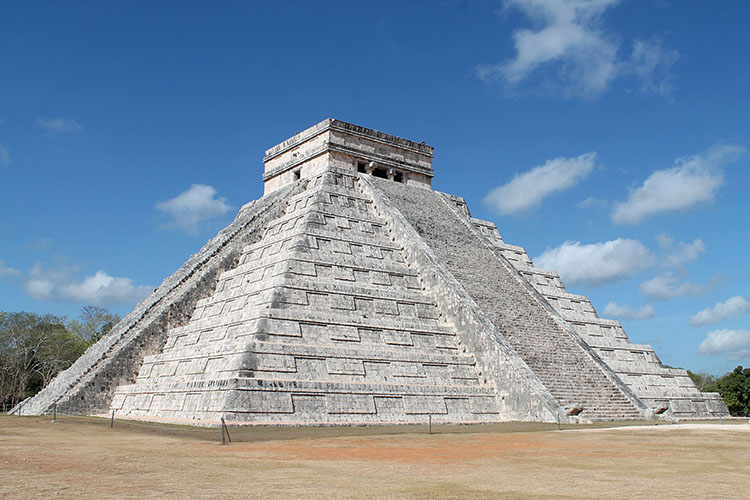
I loved my time in countries like Nicaragua, Colombia and Peru, but the language barrier was always there. From the friendly shop owners who often tried to strike up a conversation to the curious locals on chicken buses throughout Central America, there were plenty of chances to delve a little deeper into the places I was travelling through. If I had happened to speak Spanish.

It definitely didn’t ruin the trip, but it would have added another dimension to it.
My Spanish Journey
Two and a half years ago I decided to learn Spanish. I was recommended an app (Duolingo — not sponsored!) and it was easy to gradually learn the basics. My Spanish learning took on a new momentum when Covid struck, and I was determined to speak (terribly pronounced and grammatically questionable) Spanish on my next trip to Latin America or Spain.

I’m not sure if I’ll ever be completely fluent in Spanish, but I now feel comfortable conversing with people in most travel situations. From bartering for rooms to random bus conversations — things should be more fun (and cheaper) next time.

So, You Don’t Really Need to Learn Spanish then?
No, especially not if you’re going on a two-week holiday in Mexico or Costa Rica. I would recommend it for people on longer overland trips though. We got by fine (my wife spoke enough to get us by, but we’d have managed without it) but we missed out on a lot of conversations with locals, and those conversations are a great way to delve deeper into a destination.

Are you planning a trip to Latin America? How are your Spanish skills? Let me know in the comments below!
- Latest Posts
Latest posts by Jon Algie ( see all )
- Kuta VS Seminyak VS Canggu: Which Bali Beach Town Is Right For You? - April 3, 2024
- Trip Type Number 3: The First Trip With a New Partner - March 4, 2024
- What’s a Trip to Laos Really Like? - February 2, 2024
TravelAsker
Which countries in Latin America do not speak Spanish?
Travel Destinations
June 11, 2023
By Kristy Tolley
When thinking of Latin America, one of the first things that may come to mind is the Spanish language. While Spanish is widely spoken throughout the region, there are actually several countries and territories that do not primarily speak Spanish as their official language. This diversity of languages is reflective of the rich cultural and historical backgrounds of each country.
Brazil: The Largest Portuguese-Speaking Country
Brazil is the largest country in Latin America and is home to over 213 million people. While it shares many similarities with its Spanish-speaking neighbors, Brazil’s official language is Portuguese. This is due to Brazil’s colonial history, as the country was colonized by Portugal in the 16th century. Today, Portuguese remains the primary language spoken in Brazil, with over 99% of the population speaking it as their first language.
Suriname: A Dutch-Speaking Nation in South America
Suriname is a small country located on the northeastern coast of South America. Despite being surrounded by predominantly Spanish-speaking countries, Suriname’s official language is Dutch. This is due to the country’s colonial history, as it was a Dutch colony until it gained independence in 1975. Today, Dutch remains the primary language spoken in Suriname, although Sranan Tongo, a creole language, is also widely spoken.
Haiti: A Creole-Speaking Country in the Caribbean
Haiti is a Caribbean country that shares the island of Hispaniola with the Dominican Republic. While French is one of the country’s official languages, most Haitians speak Haitian Creole as their primary language. Haitian Creole is a creole language that developed as a result of the French colonial period in Haiti. It is a mix of French and West and Central African languages.
French Guiana: A Department of France
French Guiana is a department of France located on the northern coast of South America. As such, French is the country’s official language. Despite its location in Latin America, French Guiana is considered part of the European Union and uses the euro as its currency. Additionally, several indigenous languages are also spoken in French Guiana, including Wayana, Palikur, and Emerillon.
Belize: A Multilingual Nation in Central America
Belize is a small country located on the eastern coast of Central America. While English is the country’s official language, Spanish and Belizean Creole are also widely spoken. Belizean Creole is a creole language that developed as a result of the country’s colonial history, which included periods of British and Spanish rule. Additionally, several Mayan languages are also spoken in Belize, including Mopan Maya and K’iche’.
Guyana: An English-Speaking Country in South America
Guyana is a small country located on the northeastern coast of South America. While it is surrounded by predominantly Spanish-speaking countries, Guyana’s official language is English. This is due to the country’s colonial history, as it was a British colony until it gained independence in 1966. Today, English remains the primary language spoken in Guyana, although Guyanese Creole is also widely spoken.
Guiana: An Indigenous Language in the Amazon Rainforest
Guiana is an indigenous language spoken in the Amazon rainforest region of northern South America. It is primarily spoken in the countries of French Guiana, Suriname, and Guyana. While it is not an official language of any country, it is recognized as a national language in Suriname. Guiana is a unique and endangered language, with only around 4,000 speakers remaining.
Trinidad and Tobago: A Nation with Multiple Languages
Trinidad and Tobago is a small nation located in the southern Caribbean. While English is the country’s official language, several other languages are also spoken, including Trinidadian Creole, Tobagonian Creole, and Trinidadian Hindi. Additionally, Spanish and French are also spoken by some members of the population.
The Falkland Islands: A British Overseas Territory
The Falkland Islands is a British overseas territory located in the South Atlantic Ocean. While English is the country’s official language, Spanish is also widely spoken due to the country’s proximity to Argentina. Additionally, some members of the population also speak Falkland Island English, a dialect of English that has developed on the islands over time.
Dutch Caribbean: Islands of the Kingdom of the Netherlands
The Dutch Caribbean consists of six islands located in the Caribbean Sea that are part of the Kingdom of the Netherlands. While Dutch is the official language, several other languages are also spoken, including Papiamento, English, and Spanish. Papiamento is a creole language that developed as a result of the islands’ colonial history, which included periods of Spanish, English, and Dutch rule.
Indigenous Languages: The Diversity of Latin America
In addition to the official and widely spoken languages of each country, Latin America is home to a rich diversity of indigenous languages. These languages are an important part of the cultural heritage of each country and are a reflection of the unique histories and traditions of each indigenous group. While many of these languages are endangered, efforts are being made to preserve and revitalize them.
Related Posts
- Which was the initial uprising to triumph in Latin America?
- Which types of flora thrive in Latin America?
- Which two significant river systems are present in Latin America?
- Which two languages are considered the primary ones in Latin America?
- Which three major rivers are found in Latin America?

Kristy Tolley
Leave a comment cancel reply.

- September 18, 2023
- No Comments
How To Travel South America: 22 FAQs To Prepare For Your Next Trip
1. when is the best time to visit south america.
South America is a big place with a variety of landscapes and micro-climates, from misty cloud forests in Ecuador to low lying deserts in Peru.
Due to such variety, there isn’t one specific month that’s optimal for visiting. However, the best time to visit in general is between May-October where most of the countries have their dry seasons.
Here are some key countries and seasons you need to know about in South America:
- Colombia – slightly different to the rest of South America. Summer in Dec-March and then again in July and August
- Brazil – Dec to March for the summer temperatures. Try to avoid the rainy season in places like Colombia and Brazil as they experience more sudden tropical downpours that can last throughout the afternoon.
- Ecuador, Peru and Bolivia – May-October are the best months as these are the dry seasons. I would say as a good rule of thumb, trekking in the Andes (Ecuador, Peru and Bolivia) will always be better and safer in summer as there’s less rain and the trails will be less muddy.
- Chile and Argentina – sunny days and ideal temperatures most of the year, especially from November-March.
- Patagonia – the southern tip of Chile and Argentina. Visiting Patagonia year-round is do-able but the summer months (Dec-Feb) are most popular due to the hotter weather. However, the shoulder seasons (September-November and March-April) are also great to avoid the big crowds. Winter months are June-August which are ideal for skiing

To download this chart in a handy infographic, head to the link below:
- When Is The Best Time To Visit South America?
2. What's The Best Travel Route Through South America?
The best South America travel route is one that follows the summer weather and goes through consecutive countries i.e. ones that are next to each other.
The best route through South America is one like this:
Obviously, this route is only possible for those of you with the ability to travel long term. For short term trips, do your research and try to visit countries during shoulder or peak seasons.
A shortened travel route that still gets the best weather through South America looks like this:
- August – Colombia/Ecuador
- September – Peru/Bolivia
- October – Chile and Argentina
- November – Brazil
However, don’t let this put you off planning a trip outside of these months. I spent time in Ecuador, Peru and Bolivia from October to January which is considered ‘winter’ which just means rainy reason. But I rarely experienced bad weather that ruined my trip.
Some forward planning always helps though. Ending up in a country during rainy season can have an impact on your trip as you might not be able to do certain tours due to the weather conditions.
For example, February is the wettest month in Bolivia and this may affect Salt Flat tours as some parts of the desert become flooded and inaccessible.

3. How Many Months Do You Need To See South America?
You need 6 months as a bare minimum to see the most popular countries in South America – Colombia, Ecuador, Peru, Bolivia, Chile, Argentina and Brazil.
This is a huge continent, so just accept won’t be able to see every country. It took me 6 months and I still didn’t get to see much of Brazil or Argentina.
Don’t let that put you off though. You can easily see 2-3 countries in month with a well planned itinerary.
One of the most popular itineraries on this website is the month-long one. I’ve outlined 4 options in the post , but the favourite is the first on the list that covers Ecuador, Peru and Bolivia and takes you from Cotopaxi Volcano to Machu Picchu to the Salt Flats, all within the space of 4 weeks.
The breakdown of the itinerary looks like this:
- Day 1-3 – Ecuador – Quito
- Day 4-5 – Ecuador – Cotopaxi National Park
- Day 6-8 – Ecuador – Banos
- Day 9 – Ecuador – Guayaquil
- Day 10-11 – Peru – Lima
- Day 12-13 – Peru – Paracas National Park
- Day 14-15 – Peru – Huacachina Oasis
- Day 16-20 – Peru – Cusco and Machu Picchu
- Day 21-23 – Bolivia – La Paz
- Day 24-26 – Bolivia – Amazon Tour
- Day 27 – 30 – Bolivia – Uyuni / Salt Flats Tour
- Day 31 – Bolivia – Fly out from La Paz, Bolivia

If you would like this 1-month itinerary in an easy-to-read, downloadable, PDF format, just pop your email in the form below to subscribe to our mailing list:
4. WHat Should I Pack For South America?
You need to pack for summer and winter when visiting South America due to the variety of micro-climates.
With the Andes going through seven countries, one day you can be enjoying warm weather and sunny skies at sea level, and the next, you’ll be cold and wet in a high-altitude mountain town.
You’ll need shorts, sandals and vests for when you’re at the beach and then base layers, hiking boots, a thermal jumper and a waterproof windbreaker for when you’re in the mountains.
Even if you aren’t into hiking, you’ll still want some decent shoes, trousers, a warm jumper and a rain jacket for when you’re in high altitude cities like La Paz or Quito as they are much colder.
For the full packing list, head to the post below:
- The Ultimate Packing List For South America
5. What Should I Wear Hiking In South America?
South America is a trekking playground, and it has several of the top treks in the world, most notably the Salkantay Trek in Peru.
Don’t be an idiot like I was and go out with just a pair of trainers. After a week in Ecuador, and having completed two treks in trainers, I realised I had made a huge mistake.
Get yourself a solid pair of waterproof hiking shoes or boots.
I would recommend boots over shoes for a couple of reasons. There were several times I stepped in a huge puddle and didn’t notice. If that had been hiking shoes, my socks would have been soaked.
I also prefer the extra ankle support of a boot and felt that the ankle high boots gave me the support I need. There were zero ankles rolled over my 6-month trip.
Here is a brief list of items for South America that you’ll need for trekking in South America:
- Trekking boots – fully waterproof and ankle high are essential for trekking in the Andes. I went into my local Mountain Warehouse and picked up a pair of these and they haven’t let me down since.
- Winter fleece – a fleece is lightweight but warm, perfect for whipping on and off when trekking to regulate your temperature. Great in the evenings as well when it’s much colder. I go with R1 Daily Zip-Neck from Patagonia
- Waterproof windbreaker – much needed when trekking in the Andes to deal with the biting winds and rapidly changing weather. I like to use the Patagonia TorrentShell 3L. Its lightweight, warm and packable. The jacket self-stuffs into one of the handwarmer pockets with carabiner clip-in loop
- Waterproof hiking trousers or shorts – on my first trip to South America I just wore shorts. This wasn’t the worst decision in the world, but I did get rained on a couple of times. I hiked with a few people who had waterproof trousers and the legs would come off. This is perfect as the flexibility is key to adapt to the constantly changing conditions and temperatures. The TorrentShell pants go perfectly with the windbreaker.
- Hiking Socks – a few pairs of sturdy merino wool socks that don’t rub. There’s nothing worse than getting a blister whilst hiking. If you are from the UK, try these on Amazon.

6. Should I Learn Spanish Before I Go To South America?
Yes, you should 100% learn basic Spanish before you travel South America.
South America is home to 9 Spanish speaking countries, with Brazil being the only one that speaks Portuguese. This means learning a little Spanish before you go can go a long way, especially as many of the locals don’t speak English.
As a bare minimum, I would recommend picking up some basic vocabulary like numbers and some simple phrases.
The official levels outlined by Common European Framework of Reference for Languages (CERF) are used around the world to designate language proficiency.
After completion of the first beginner level (A1) , a person can “Understand and use very basic expressions to satisfy concrete needs. Introduce themselves and ask other questions about personal details. Interact simply if the other person speaks slowly and clearly.”
On Duolingo , you can complete this in 1-2 months if you are consistent.

In big cities, you’ll be fine and most of the staff in hostels and tour companies will speak English. However, once you get to border towns and places off the beaten track, you’ll need to know some Spanish to help you get by.
Knowing basic Spanish also means you are less likely to be taken advantage of as you look like less of a tourist. I would always ask cab drivers how much a ride would cost and then having a brief chat with them in the cab.
As a bonus, it’s also fun being able to speak to locals and they will always appreciate the effort put in. You’ll have a much more authentic experience if you can interact and involve yourself with the local community as much as possible.
Here are some basic phrases to learn that can make your trip that much easier:
- ¿Dónde está … el baño? – Where is the bathroom?
- Useful when you need to find restroom facilities. Use ‘donde esta’ to ask for anything you need to find like a pharmacy or a bank
- ¿Cuál es el plato/menu del día? – What is the dish of the day?
- Helpful when dining at local restaurants to ask about daily specials. The menu of the day is often a set meal for $2-3 and great for eating on a budget
- Me gustaría una cerveza, por favor . – I would like a beer, please.
- Use this as a polite way of ordering a drink in a bar or restaurant.
- ¿Puedes ayudarme? – Can you help me?
- A polite way to ask for help
- ¿Cómo llego a…? – How do I get to…?
- Useful when seeking directions to a specific place.
- ¿Qué recomiendas para comer aquí? – What do you recommend to eat here?
- A great question to ask for food recommendations from locals.
- ¿Cuánto cuesta el tour/excursión? – How much does the tour/excursion cost?
- Handy when inquiring about the price of guided tours or activities.Use ‘cuanto cuesta’ to ask how many anything is. Especially useful before getting into cabs to agree on a price.

A simple pocket-sized phrasebook like this one can be a lifesaver at times.
I took this with me on my first trip and used it in many situations during my first few weeks in South America before eventually signing up to a language school.

7. Should I Take A Backpack Or A Suitcase To South America?
The answer is neither, take a hybrid backpack that has wheels to South America.
I spent 6 months travelling South America and took with me an eagle creek 85L wheeled backpack.
I never once had to wear it on my back. The only time it was a little annoying was in towns like Cusco that had narrow pavements and cobbled streets.
Why not just take a wheeled suitcase? Several reasons:
- The shape and structure of a wheeled backpack is much more suitable to hostels. The long and narrow bag can be stood up or laid flat and hardly takes up any room.
- Backpacks also fit into lockers easier compared to a suitcase and can be locked away and kept safe underneath your bed.
- It can be put on your back if needed. Best of both worlds.
Here’s a quick comparison of the advantages of a suitcase vs a backpack vs a hybrid:

For the full breakdown comparison between backpacks, suitcases and hybrids, along with my suggestions for the best options in each category, head to the post below:
- Suitcase vs Backpack: Which One For South America?
8. What Size Backpack Should I Take To South America?
The size of the backpack you should take to South America depends on several factors, including the duration of your trip, the countries you plan to visit, and the activities you intend to undertake.
Here are some backpack size recommendations for specific countries in South America:
As mentioned, I took an 85L wheeled hybrid backpack along with a 30L daypack on my extended trip to South America. However, I also had camera equipment that took up at least 20L in my bag.
Therefore, I would recommend taking between 60-70L for your backpack and 30-40L for a day pack when travelling South America.
My current combo is:
- Osprey 80L Hybrid
- Tortuga 40L Backpack
Watch the video below to see why the Tortuga 40L is one of the best day packs around:
9. What's The Best Way TO Deal With Altitude In South America?
Dealing with altitude in South America is an issue for many people. Some have to deal with a constant headache or nausea whilst others feel exhausted and are unable to do much for a day or two.
Here are some useful tips for dealing with altitude in South America:
- Take your first days slowly – When arriving somewhere with a high altitude (let’s take Quito for example at 2800m), take a couple of days to acclimatise. Don’t plan any strenuous activities and see how you feel. Get lots of sleep and stay rested.
- Food – stay hydrated and well fed, and eat lots of bananas – potassium helps.
- Medication – you can buy coca leaves from local markets. The locals chew on them to help with altitude sickness. If you’re still struggling head to a pharmacy and buy altitude sickness pills such as Acetazolamide (sold under the name of Diamox).
- Build up – if you can, plan your trip in a way so that you start at lower elevations and build up slowly, adjusting a little each time.
Take Peru for example. You’ll arrive in Lima and travel down the coast to Paracas, enjoying sea level altitude for a week. Then when you reach Arequipa, you’ll need to acclimatise to 2300m. If all is good here, Cusco is the next stop.
You’re now at 3400m in Cusco. Take the first couple of days easy and don’t do any strenuous activities. If you’re fine walking around then great, you should be fine everywhere else. After some time in Cusco, why not go even higher – 4500m on the Salkantay trek or 5200m at Rainbow Mountain!

10. What's The Best Way TO get Around South America?
The best way to get around South America if you’re on a budget is by bus .
Buses are cheap and the services are good quality. Some of the distances are long which require an overnight bus but I always found these comfortable and easy to sleep on.
I would use Busbud to find the best prices and times. However, you don’t always need to book online. For most places in South America, you can simply go to the bus station the day of your departure and hop on the next bus.
You can also take buses across the border. From Cusco to Copacabana, you can take an overnight bus that takes 9 hours.
Here is a list of best and safest bus companies to use in each country that are reputable:
- Colombia – Rapido Ochoa. However, I would personally get internal flights. They are cheap and quick whereas the bus journeys in Colombia are 10-12 hours long at a minimum. The topography of Colombia is rough too meaning the roads are bumpy and curvy, making for an unenjoyable ride.
- Ecuador – unfortunately Ecuador doesn’t have an establish company that covers the country, so you’ll just have to use local buses. Don’t worry though, I spent a month in Ecuador and never had an issue on the local buses.
- Peru – Cruz Del Sur or Peru Bus
- Bolivia – Trans Copacabana
- Chile, Argentina, and Brazil – take internal flights. These countries are so big that the journey times mean a bus is never worth the hassle. The buses are almost as expensive as the flights as well.
If you are doing an extended trip through South America, then there will be times you’ll need to fly. Luckily flights won’t break the bank. I flew from Guayaquil (in Ecuador) to Lima in Peru for under $100.
A secret hack is to go and book flights in person at travel agencies in South America. You’ll get them much cheaper compared to using sights like Skyscanner.
Alternatively, there are companies like Way Away which are rewarding customers for booking flights with them. I have been using them for my most recent trip to South America and I’ve received loads of cashback already.
If you sign up to the Way Away Plus program, you’ll get flights 5% cheaper and up to 10% cashback on hotels and other bookings.
Use the code SWGH10 to get 10% off when you sign up to the plus program.

11. Should I Use Cash Or Card In South America?
You’ll be using cash most of the time in South America.
Card machines and payments only exist in the big cities and even then, they don’t always work with a foreign card. You’ll be paying in cash for most things like transport, food, and activities.
In terms of having cash on you, never carry too much cash at one time. Petty theft is still an issue in many places in South America.
My system whilst travelling South America would be to take out my weekly budget ($300) from a cash machine. I would then store it in my travel wallet (which is safely locked in my bag inside a locker in my hostel).
I would then take out my daily budget of around $50 a day.
12. What's The BeSt Debit Card To Use In South America?
If you are from the UK , I would recommend getting a Monzo card before travelling to South America. It allows you to pay for things anywhere, in any currency, without a fee.
If you upgrade to the Monzo Plus which costs £5 a month, you get fee-free withdrawals abroad. Up to £400 free every 30 days. If you upgrade to Monzo Premium, for £15 a month, you get all these features, discount on airport lounges and worldwide travel insurance included. Not a bad deal.
In the USA , one of the best currency cards for South America is Revolut as they don’t charge you fees for withdrawing cash in a foreign currency.

13. What's The Food Like In South America?
I personally love the food in South America, especially Peruvian food. Ceviche is one of my favourite dishes.
Each country will have its own cuisine and popular dishes and I recommend you get out of your comfort zone and try them.
Here are a few to try:
- Argentina – Choripan, Asado and Alfajores
- Peru – Ceviche, Lomo Saltado
- Ecuador – Bolon de Verde, Encebollado
- Chile – Pastel De Choclo, Cazuela
- Brazil – Coxinha, Feijoada
- Colombia – Bandeja Paisa
The ultimate budget hack when travelling South America is to look for restaurants offering ‘menu del dia’ . They aren’t hard to find, and you’ll notice locals populating these restaurants.
The ‘menu del dia’ is a set menu that usually consists of a main meal such as rice and meat, a side dish such as a soup, and a drink.
They cost between $3-5 depending on the country you are in.
Markets stalls will also offer a set menu. This is a filling meal that will help you stick to a budget. I would have free breakfast at the hostel, find a ‘menu del dia’ in the local market for lunch and then usually treat myself to a restaurant meal in the evenings.
14. Do I Need Vaccinations For South America?
You’ll need a few vaccinations before you travel to South America. Some you may have had as a child though.
I’m from the UK and got all my vaccinations free with the NHS . Sorry Americans, I don’t know how it works in your country!
For UK citizens, the best thing to do is speak to your local GP and tell them your travel plans. They will have records of your vaccinations and then tell you which ones you need.
The likely vaccinations you’ll need before you travel to South America are:
- Hepatitis A
- Hepatitis B
- Japanese Encephalitis – this is caught from mosquitos. Essential if you are visiting in the Amazon, tropical climates or places during rainy season.
- Yellow Fever – some countries in South America will require proof of your yellow fever vaccination before entering.
The rabies vaccine is optional. In the UK, you can’t get it free on the NHS and you’ll have to pay for it. It’s given in 3 does over 28 days so make sure you plan accordingly.

15. What Are The Hostels Like In South America?
There are some top-quality hostels in South America, and I was impressed by what was on offer.
Aside from some great stand-alone hostels like Milhouse in Buenos Aires you also have chains running in some countries for consistency.
They are also cheap, and you can expect to pay anywhere between $6-12 a night for a dorm room.
In Ecuador, Secret Garden and Community Hostels are great. Peru has Wild Rover, Loki and Kokopelli. The latter being my favourite due to the high-quality dorm rooms.
Bolivia doesn’t have many hostel chains but several well-run individual hostels. My favourite is The Nest in La Paz. Chile and Argentina are much more built-up countries and have a variety of hostels suitable for budget backpackers and flashpackers.
For the full list of my favourite hostels in South America, head to the post below:
- The 19 Best Backpacker Hostels In South America
16. Is South America Safe?
Safety is a big concern for travellers heading to South America. During my time there I was never robbed in person, however I have heard stories of people getting robbed from other travellers.
If you stick to crowded areas and don’t go out alone at night to random parts of the city, the likelihood of you getting into trouble is low.
We met several people who had their phones stolen from their pockets during Carnival in Brazil. Try to use a sling or fanny pack where possible.
The one time we had our stuff stolen was in a hostel in Chile. We put our laptops in a storage locker and left some smaller items in our backpack which was left out in the dorm thinking it would be fine. We came back from dinner and didn’t realise until a day later that someone had taken some of our smaller electronic items. Always lock up your backpack in your locker whilst staying in dorms.
Most small scams come from taxi drivers so it’s always good to be aware. Always make sure they turn the meter on before driving off.
In some places, you’ll find taxis that don’t have meters. If this is the case, always agree on a price first. Before getting in, ask ‘cuanto cuesta’ which means how much. Agree on a price beforehand otherwise you will get stung when they drop you off or end up in an argument.
Cuppa To Coppa Travels has a great blog on the top scams to watch out for in South America:
- 11 Scams In South America You Need To Know

17. Do I Need Travel Insurance Before I Go To South America?
Getting travel insurance is a must before travelling to South America.
The two things you need to protect, when travelling to any foreign country not just South America, are yourself and your gear.
The two things that are most likely to happen to you are:
- you get sick or hurt
- your stuff breaks or gets stolen.
Over a long enough period, one or the other will happen.
During our time in South America, we were very lucky to not have anything disastrous happen, but both of these things happened to us. One of us got bitten by a dog on a trek and had to get rabies jabs. This cost around $200 which was paid back by the travel insurance company.
We also had some small items stollen from our bags whilst staying at a hostel. All we had to do was visit the police station, file out a police report and give this to the insurance company. We received a payout for this and were able to replace the items shortly after.
The biggest thing you want to protect yourself from though is serious illness . You never know what can happen and if you hurt yourself badly during a trek, or catch something nasty, you could end up in hospital for days or even weeks and you’ll need to be covered.
Get travel insurance! It gives you peace of mind so that you can enjoy your travels.
18. Should I Book Tours Online In South America?
The beauty of south America is that you can visit most places without a tour – even the Galapagos Islands!
Do your research and if you prefer adventure, try to visit places without booking a tour guide.
For example, Paracas National Reserve and Colca Canyon in Peru can easily be visited without a tour.
When you are in a big city like Quito, you can easily be tempted into booking a $50 day tour into the countryside or to the next town along. Again, these places are much better visited by yourself. Mindo and Otavalo are two examples where you will save money and have a much better time by skipping a tour.
For any tours you do wish or need to book, online booking still isn’t the way forward. The online prices are set and often over inflated. If you can, book in person and use your haggling skills to get the best price. Haggling is completely acceptable in South America!
Me and some friends got a great Uyuni Salt Flat tour deal with Salty Desert Adventours by visiting their office and haggling. However, when we booked our Amazon tour in Bolivia online, we realised we messed up as most people we spoke to on our tour got theirs for half the price by booking in person.
If you are going to book a tour, I would recommend doing your research first and seeing what’s on offer. In some cases, booking beforehand is the only way.
For example, Rainbow Mountain in Peru can’t be visited without a tour. Its too far away and requires too much admin. A tour is high quality, costs $50, and includes all your meals and transport.
When I did book day tours, I would compare between Viator and GetYourGuide to find the tours with the best prices and reviews.
19. What's The Best Sim Card To Get For South America?
If you are travelling to multiple countries in South America, I would recommend getting an eSIM (digital SIM card) instead of a physical SIM card.
An eSIM is better than a physical SIM card for a couple of reasons.
Firstly, you can access the Internet from any country in South America without having to pay excessive roaming charges. Secondly, you don’t waste time looking for a local plastic SIM card. An eSIM can be activated either immediately after installation or upon arrival at the your destination.
When I first travelled to South America, I bought a sim card in most countries as I was there for a month or more. This can be a bit tricky if you don’t speak Spanish but if you go to a mobile shop, the clerks are more than happy to help. I had a guy in Argentina talk me through the whole process in perfect English. However, having to do this in every new country I went to became annoying.
I now use Airalo . Airalo is the world’s first eSIM store that solves the pain of high roaming bills by giving travellers access to eSIMs from over 200 countries.
Simply download the app, buy the digital sim, and then use the app to switch sims when you reach your destination and you’ll have data on the go.
20. What Adapter Do I Need For South America?
Unfortunately, there’s little consistency between the electrical outlets and plugs in South America so you’ll need a decent travel adapter.
Ecuador, Colombia and Bolivia have the same outlet as the U.S. But the rest use a variety of shapes.
The best thing to do is to buy a universal travel adapter. Make sure you get one with extra sockets and USB-A and USB-C outlets too.
These are super handy when you need to charge a phone, camera, portable charger and laptop all at the same time. Especially if you’re in a shared dorm and you only have a single socket next to your bed.
Here’s my favourite travel adapter:
You won’t be getting the best wattage from the plugs either. Make sure you bring a portable charger and keep it regularly charged.
I’m a big fan of Anker products.
I’m currently using the Anker 337 PowerBank. With full charge, you can charge your phone up to 6 times. This was a life saver on long overnight buses. It only takes 6 hours to charge as well so you plug it in overnight and be ready to go the next day.

21. Can I Drink The Tap Water In South America?
No, the tap water in South America isn’t drinkable.
Unfortunately, this means you’ll go through a lot of plastic water bottles during your time there.
The best thing to do is to bring a 1L flask that you can refill at hostels. Some hostels will have a fountain or cooler with drinkable water. However, I was surprised to find that even then they were few and far between.
My flask of choice whilst backpacking South America was the 1L (40oz) Lightweight Wide Mouth Trail Series from Hydroflask .
It’s 20% lighter than the other flasks they provide which is ideal when you’re carrying it around all day or hiking.
22. Do I Need Visas For SOuth America?
Travel in South America is simple for both US and UK citizens.
All countries require a tourist visa but these can be purchased on arrival in each country. Tourist visas for most countries last 90 days however Peru allows 180 days.
In previous years, reciprocity fees were required to be paid by US citizens on arrival to some South American countries. For example, Bolivia required a $160 reciprocity fee. Brazil and Chile also had similar fees.
However, these have all been waived as of 2019.

Popular South America Itineraries
If you have more than two-weeks to spare then why not check out our other South America itineraries ranging from three weeks to three months:
- 5 Expertly Curated Three-Week South America Itineraries
- 4 Epic 1-Month South America Backpacking Itineraries
- The Perfect 2-Month South America Itinerary For Budget Backpackers
- The Ideal 3-Month South America Backpacking Itinerary
- The Perfect 1-Month Peru and Bolivia Itinerary
- How Many Days Do You Need In South America – 6 Great Itineraries That Work For Every Traveller
- 4 Perfectly Planned 10-Day Itineraries For South America
- 4 Fast-Paced One Week Backpacking Itineraries For South America
- The 8 Best Digital Nomad Cities In South America
- Colombia, Ecuador & Peru Itinerary: From Two Weeks To Two Months
- Author Profile
- Posts by the Author
- How Many Days In Bariloche? [3, 5 & 7-Day Itineraries]
- 22 Free Activities On The Galápagos Islands [+4 Affordable Tours]
- Galapagos Islands On A Budget – 15 Shoestring Tips To Save!
- The Ideal Argentina Itinerary [Two Unique One-Month Routes]
- How To Get To The Galapagos Islands [From Anywhere]
- 16 Reasons Why The Galápagos Islands Are Worth Visiting

Joe Bayfield
Hi I'm Joe Bayfield, Bayf for short. I love South America and want people to visit this incredible continent. I’ve travelled through Colombia, Ecuador, Peru, Bolivia, Chile and Argentina and also lived in Lima, Medellin and Buenos Aires. I write detailed South America itineraries to help you plan your next adventure!

Travel South America Like A pro

Do You Want To See South America On A Budget?
See Machu Picchu, the Amazon and the Bolivian Salt Flats, all with this efficient money-saving itinerary
Don’t Miss Out - on Valencia Travel’s Best Savings - Up to 50% Off Adventures!
12 Day – Classic Peru - 50% OFF
Trek Along the Inca Trail & Machu Picchu - 50% OFF
- Inca Trail Availability
- Our Blog Section
- (Usa / Canada) : 1 - (860) 856 5858
- Sales: 1 - (917) 9832727
- Peru: + 51 992 236 677
Destinations
- Madre de Dios
- Chachapoyas
- Multidestination
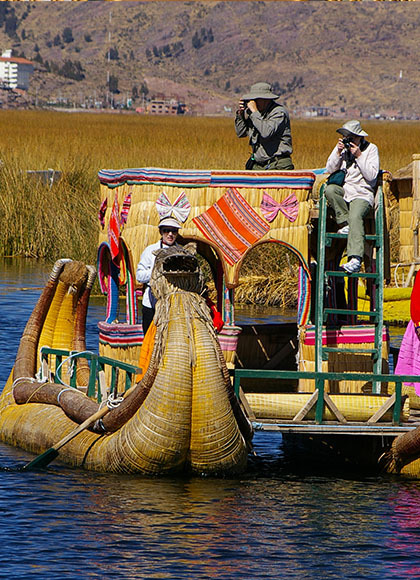
Inca Trail Packages
- Classic Inca Trail - 4 Days Promo
- Classic Inca Trail - Premium - 4 Days
- Short Inca Trail to Machu Picchu - 2 Days Promo
- Inca Trail Express to Machu Picchu - 5 Days Promo
- Salkantay & Inca Trail to Machu Picchu - 7 Days
Inca Trail to Machu Picchu
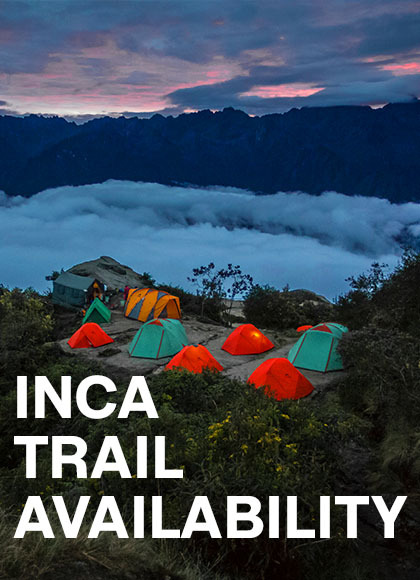
Adventure Packages
- Trek Along the Inca Trail To Machu Picchu - 7 Days Promo
- Salkantay Trek & Machu Picchu - 8 Days Promo
- Lares Trek & Machu Picchu - 7 Days Promo
- Ausangate, Rainbow Mountain & Machu Picchu - 10 Days
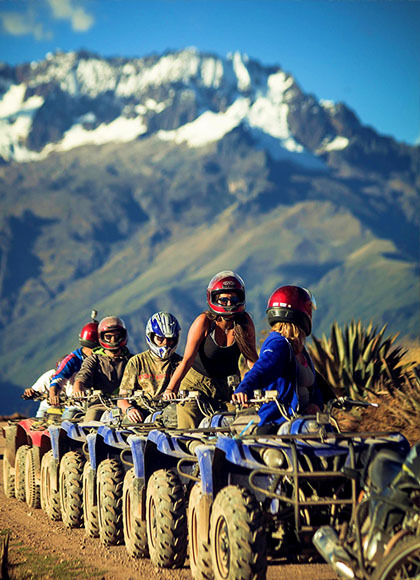
Cultural Packages
- Machu Picchu Express - 7 Days
- 7 Day - Classic Peru Trip - 7 Days Promo
- 12 Day – Classic Peru - 12 Days Promo
- The Best of Peru - 9 Days Promo
- The Best of Magical Peru - 15 Days
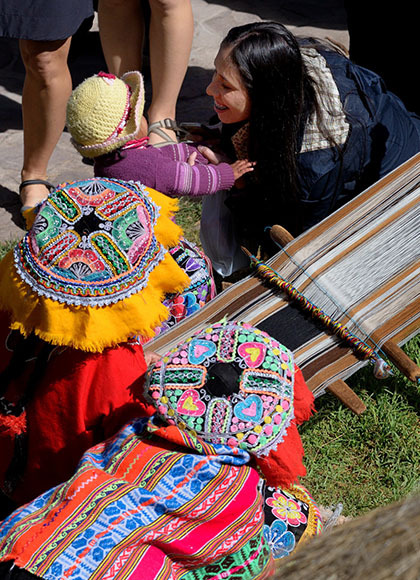
Peru Tours Packages
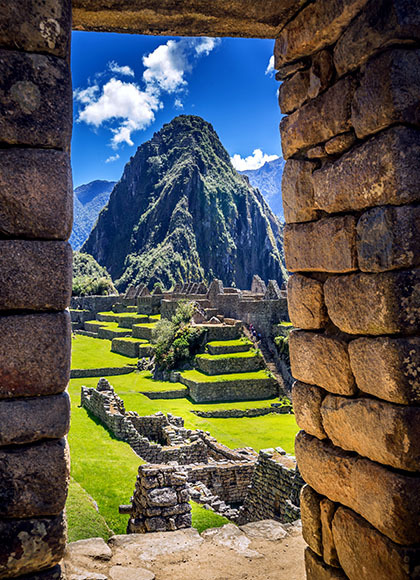
- Tailor-Made Tours
About Valencia Travel
- What others say
- Our Purpose
- Our Philosophy
- Our sustainability efforts
- Our History
- Why Valencia
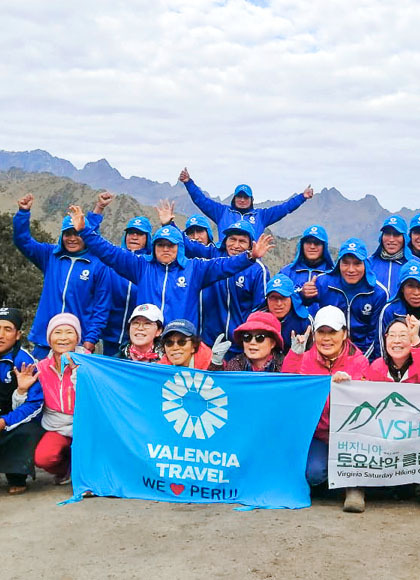
- Classic Inca Trail
- Classic Inca Trail - Premium
- Short Inca Trail to Machu Picchu
- Inca Trail Express to Machu Picchu
- Salkantay & Inca Trail to Machu Picchu
- Trek Along the Inca Trail To Machu Picchu
- Salkantay Trek & Machu Picchu
- Lares Trek & Machu Picchu
- Ausangate, Rainbow Mountain & Machu Picchu
- Machu Picchu Express
- 7 Day - Classic Peru Trip
- 12 Day – Classic Peru
- The Best of Peru
- The Best of Magical Peru
Get our Travel Tips delivered to your Inbox
Traveling to Peru without speaking Spanish

Written by: Claire Dean
Published: 23-01-2023.
Peru is a country located in the central part of South America, bordered by Ecuador , Colombia, Brazil, Chile, and Bolivia. The country is home to 38 million people, making it one of the largest countries in South America. The official language of Peru is Spanish so most people speak Spanish, along with a number of other indigenous languages, with over 84% of the population speaking it as their first language. However, English is also spoken in Peru , with about 11% of the population speaking it as their second language. When you are booking a trip to Peru you are probably wondering if it is necessary to be fluent in Spanish or if can you get by with English on your visit to the country. Here is some use useful information.
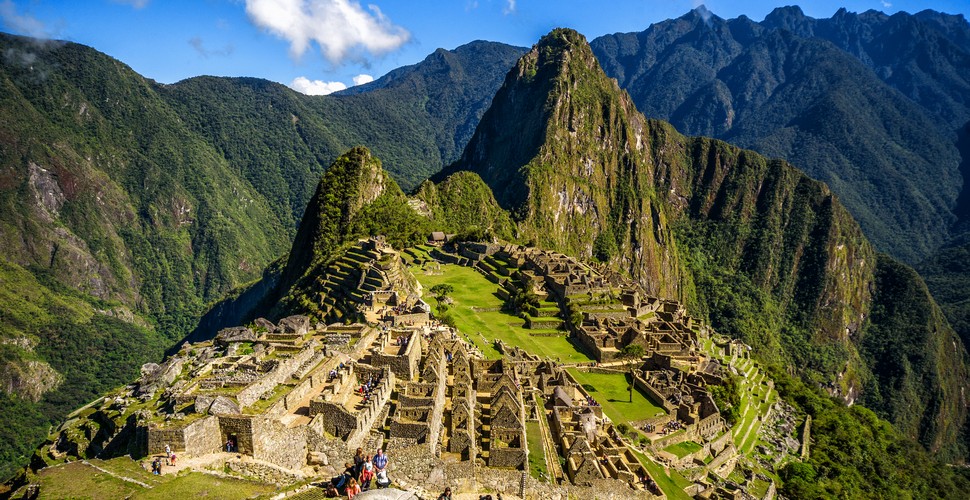
Machu Picchu
If you plan to visit Peru with little to no Spanish-speaking skills, we would recommend spending a lot of your time in Lima and Cusco . Once you get outside those areas, things will become a lot more difficult without Spanish. You can spend most of your time in the tourist districts of Lima , like Miraflores and Barranco, where you can interact with many people who can speak some English – no matter what you’re doing. Miraflores is an upper-class neighborhood in Lima filled with tourists. Speaking some English is pretty important for a number of Peruvians working and living in the area. In Cusco , the city thrives on tourism. The locals have a huge incentive to learn some English. If they can communicate in English, they’ll get a better jobs in the tourism industry. So you don’t need to avoid going to Peru just because you don’t speak Spanish. You can travel to Peru without knowing any Spanish at all and still have a fantastic trip. As a tourist, you’re more likely to meet English-speaking Peruvians, especially if you’re traveling along the popular touristic routes. Tour operators, guides, hotel and hostel staff, and other people working in the tourism industry in cities like Cusco , Puno , and Arequipa are far more likely to have some basic level of conversational English, with many speaking excellent English.

Travel to Peru

Learn Spanish
The benefits of speaking spanish in peru.
If you need some motivation to learn to speak Spanish for your Peru trip , here are just a few reasons to start studying before you travel.
You’ll find it far easier to travel around Peru if you can ask for basic information like arrival times and travel durations. Also, being able to ask a bus driver or passenger where exactly you are and when you should get off is a huge bonus.
You’ll be able to save money every day by negotiating fares, haggling for prices, and spotting rip-offs, among other things.
You’ll be able to communicate with the locals. Even if it’s only a very basic conversation, it will go a long way to forming bonds and positive memories with the local people. And that’s a pretty fundamental part of traveling.
You’ll be more comfortable traveling off the tourist trail in places where English speakers are rare.
You won’t feel so lost when it’s time to order in restaurants, cafes, and bars.
You’ll have fun when you speak Spanish in Peru . Well, not always: sometimes trying to speak Spanish is a migraine-inducing nightmare, especially if you’re just starting to learn and you’re on a long trip. But it can be fun.

If you want to get the most out of your Peru trip and travel in a far more relaxed manner, then having the ability to speak Spanish in Peru goes a long, long way. Even if you just learn some basics, you’ll have a far easier time getting around, ordering in restaurants, and dealing with simple day-to-day interactions so you can concentrate on making the most of your vacation in Peru!
SHARE THIS POST
Popular posts.

Coca Tea- The Andean Cure-all!

Solo women travelling in Peru
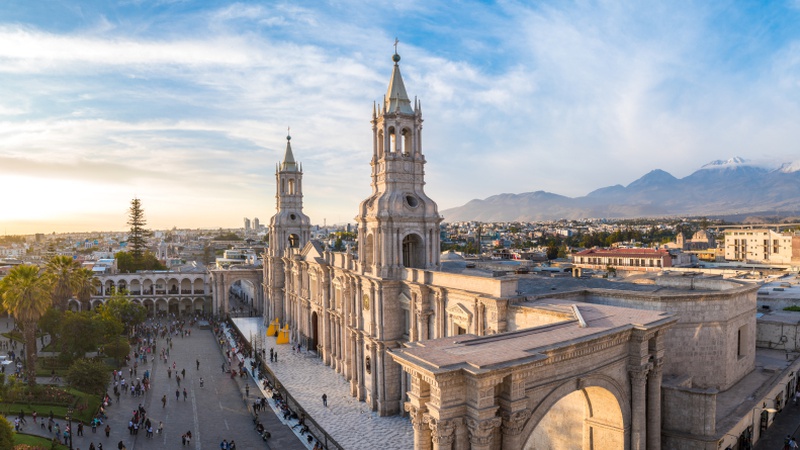
Arequipa, the White City

10 Cusco “MUST-DO'S” that DON'T include Machu Picchu
- Vacation Rentals
- Restaurants
- Things to do
- Things to Do
- Travel Stories
- Rental Cars
- Add a Place
- Travel Forum
- Travelers' Choice
- Help Center
No spanish - south america too difficult? - Solo Travel Forum
- Tripadvisor Forums
- Solo Travel Forums
No spanish - south america too difficult?
- United States Forums
- Europe Forums
- Canada Forums
- Asia Forums
- Central America Forums
- Africa Forums
- Caribbean Forums
- Mexico Forums
- South Pacific Forums
- South America Forums
- Middle East Forums
- Honeymoons and Romance
- Business Travel
- Train Travel
- Traveling With Disabilities
- Tripadvisor Support
- Solo Travel
- Bargain Travel
- Timeshares / Vacation Rentals
- Solo Travel forum

I am pondering going to south america later in 2014 for 2 months, but from my readings and comparisons to locations in Asia, i find the risk of theft/muggings higher and the level of english a lot lower
Maybe that is biased reading in my initial reviews, and I will accept there is some fear / skepticism in my initial reviews that i picked up on more the negative at the moment, but i am genuinely keen to visit some combination of Costa Rica, Bolivia, Nicaragua, GuataMale, Chile and Peru
am i over doing it on the negative / crime/ and is it safe enough to get by language wise?
Costa Rica has a very well developed tourist industry! I don't think you'll have any problems there. I cannot speak to the other countries on your list but since they are all quite different I'd try posting questions on the forums for each country. I would also start reading info that is given on the forums because they may already have TopQuestions dealing with these topics. The Top Questions are found on the right side of the page of each forum but you cannot see them if you are using your phone to access this site.

When I first went to Central America, I had the same concern. Now I have been there several times and I love it. For tourists places, the level of English is ok. I have only been to a few places in the countries you list, but I think it would be similar.
For safety, one needs to behave wisely no matter where. Some people can handle no matter what happens, some are better to stay at home.
I think it will be an awesome experience, and the awesomeness of the trip will overcome its difficulty.
Peru I've been to with no Spanish (though I was with others who also didn't speak the lingo) and I was surprised how quickly I picked up words. We used drawings and sign language - though we nearly got a vacum cleaner instead of a torch. Many words printed in supermarkets could be worked out. There are some with English and they enjoy practising.
A few phrases will get you by. Hola, Cuanto costa, perdon the words have a similarity to ours. So a quick note of the ones you may need. Either a small dictionary with phrases or if you have a cleaver phone this site gives you the pronounciation as well http://www.spanishdict.com/translate/how%2520much
Safety wise you need to know where not to go (is the most important) and how to behave. Not flashing cameras, money or jewellery, don't walk down streets eating or drinking (there are a lot of beggars sleeping and working the streets) and keep head up and stride out as though you know where you are going.
Bolivia (not so much) and Nicaragua ( a lot) you need to research for safety.
<am i over doing it on the negative / crime/ and is it safe enough to get by language wise?>
In a word, yes. As stated, do the research and I'm sure you'll be fine.
Thank you for your help
This topic has been closed to new posts due to inactivity.
- India woman solo travelers 10:16 pm
- route advice : Canada, USA, Mexico, and Cuba 8:23 pm
- The Theft and Xcover's Heartless Exploitation 8:19 pm
- What’s been your favorite solo trip? Apr 10, 2024
- Looking for 40somethings in the Caribbean Apr 10, 2024
- Returning to the same country? Apr 09, 2024
- Advise for Month Stay in Charming Village in Europe Apr 08, 2024
- Too Old To Stay in A Backpacker? Why? Apr 06, 2024
- What European cities are good for solo travels? Apr 05, 2024
- Big Cities or Beach Resorts for Solo Travelers Apr 05, 2024
- Outdoorsy travel ideas / Adventures! Apr 05, 2024
- Sri Lanka, Philippines, or Vietnam for 1st solo/elective? Mar 28, 2024
- Mount Rinjani trekking Mar 26, 2024
- Travelling to SEA during oct-nov Mar 25, 2024
- Links to a Travel Buddy Thread & Couchsurfing Thread - Informational/Warnings/etc.
- Information Item: Top 100 Tips for Planning A Solo Trip
- Collection of travel blogs and websites (non-commercial) for new solo travelers
- Inspirational Traveler Experiences (posts) and Articles on the Power of Solo Travel
- My First Solo Trip
- Trip Reports - Going Solo
- Trip Reports 2 - Going Solo
- Trip Reports 3 - Going Solo
- First solo senior travel adventure in Italy
- Is Solo Travel for a Woman Safe?
- How to eat alone while traveling
- Solo Volunteer Opportunities or Reports
- Ideas for No Single Supplement
- Safe + Inexpensive in Caribbean - Suggestions?
- World Cup - Solo Travel
Can you visit Argentina without speaking Spanish?
Our Expert: Hannah Divine
Created: 21.02.2023
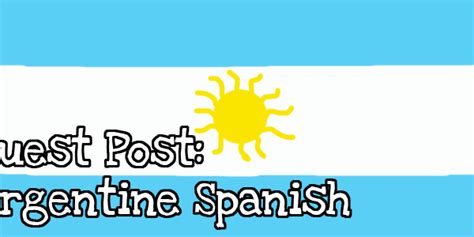
Language is not a problem in Buenos Aires. Many people speak English, in particular those related to tourism. You shouldnt have any problems if you stay near the circuit for tourists.
Can you go to Argentina without knowing Spanish?
While it's always more rewarding to be able to speak the local language when visiting a country, it's not necessary to speak Spanish for a tourist visit to Argentina. English is spoken in many of the tourist destinations.
Can you get by speaking English in Argentina?
Many people still speak English, especially in the larger cities. In addition, most Argentines are happy to practice their English with foreigners. So feel free to try speaking English even if your pronunciation or grammar could be better. With a little effort, you should be able to get by just fine.
Can you live in Argentina without speaking Spanish?
While Spanish is the official language, Italian, English, German, French, and many indigenous languages are spoken in Argentina as well. Native inhabitants in the Andes speak Quechua, and the various immigrants brought their own languages with them.
Is Argentina friendly to tourists?
Argentina is an incredible country with a lot to offer tourists. There is something for everyone, from natural beauty to rich culture, food, and history. Despite the reputation that South America has, Argentina is one of the safest countries in the world to travel to.
Is Argentina friendly to foreigners?
Foreigners can easily live in Argentina. In fact, Argentina is one of the most friendly countries for expats. People from dozens of countries can enjoy visa-free stays for up to 90 days. For people wanting to call this South American wonderland home, there are plenty of visa options.
Is Buenos Aires English friendly?
Finding people who speak English in Argentina won't be an easy task. This is especially true if you travel to smaller, more rural areas. Though Buenos Aires is a big city with a higher chance of people understanding basic English, it would still be advisable to know some basic Spanish.
Should I bring cash to Argentina?
Argentina currently has a significant black market (known as the 'blue' market) for foreign currency, so travelling with and spending US dollars in cash is an absolute must. This is an accepted way of life here, so don't worry, you're not doing anything illegal.
What are the top 3 languages in Argentina?
While Spanish is the dominant language in Argentina, there are many other languages spoken in Argentina. They include Italian (second most spoken language in Argentina), Quechua (mainly spoken by Bolivian immigrants who settled in Northern Argentina) and Guaraní (mainly spoken in the province of Corrientes).
How long can you stay in Argentina as a tourist?
Entry, Exit and Visa Requirements Private U.S. citizens do not need a visa for visits of up to 90 days for tourism or business. Diplomatic or official passport holders must obtain visas prior to arrival. The U.S. Embassy in Buenos Aires cannot help travelers with obtaining Brazilian, Paraguayan, or other visas.
Is it cheap to live in Argentina?
According to numbeo.com, the cost of living in Argentina is 50% to 60% less than in the U.S. All told, a couple can expect to live comfortably on $1,500 to $1,800 per month. Single individuals can expect to get by on about $1,000 per month. In particular, housing in Argentina is quite affordable by U.S. standards.
Is Argentina cheap for tourists?
Argentina is a beautiful destination to visit and can be an affordable place to travel. Cooking your own meals, carefully selecting accommodation or limiting meals out will definitely help you to reduce your travel costs.
Can you travel South America without knowing Spanish?
Traveling Latin America without Spanish While it's very helpful to know some Spanish, surviving without it is entirely possible. You can even have a highly enjoyable trip without knowing the local lingo. If the language barrier is stopping you from going, just go!
Is Argentinian Spanish easy to understand?
The only difficulty for learners who want to explore Argentine culture is that Spanish in Argentina is quite different from other dialects. If you're not used to it can be difficult to understand.
Can you drink the tap water in Argentina?
The tap water is safe to drink in Buenos Aires and most parts of the country. To be sure, ask your tour leader or the hotel/restaurant staff. Bottled water is readily available and should be used in remote rural areas.
Why do people leave Argentina?
“The bad policies of all governments and the lack of the rule of law, among other factors, have caused a large number of Argentines to want the same as us, to leave.”
How do Argentines say hello?
When greeting for the first time or in a formal setting, Argentines generally shake hands and give a slight nod to show respect. The 'abrazo' is the most common greeting among friends and family. This consists of a handshake and an embrace. The number of kisses when giving an abrazo varies from region to region.
What is Argentinian slang for girl?
Pibe/Mina. “Pibe” and “Mina” are colloquial terms to say boy and girl in Argentina, and they are most commonly used to describe someone who is slightly immature.
What do you call a female Argentinian?
Argentines (mistakenly translated as "Argentinians" in the past); in Spanish Argentinos (masculine) or Argentinas (feminine) are people identified with the country of Argentina. This connection may be residential, legal, historical or cultural.
Is Buenos Aires safe right now?
It is safe compared to other South American cities but it also depends on where you're staying in Buenos Aires – there are some things you need to be careful of.
Is Argentina safe for female Travellers?
Argentina is a relatively safe country for women to travel alone, yet it's always convenient to know safety tips before traveling to another country.
Can you use Euros in Argentina?
Money. The national currency is the Argentine peso. Many vendors will accept Euros or US dollars but the exchange rate won't be great so it's best to pay in local pesos.
Do you tip waiters in Argentina?
Tipping is not mandatory in Argentina and completely discretionary but it does form a strong part of the culture and people look to tips as a reward for good services. As a tourist, a little generosity with 'propinas' will go a long way, especially if you're happy with the service you received.
Does Argentina kiss greeting?
Greetings Kissing on the cheek when greeting hello and goodbye is part of Argentine culture. When Argentines enter a room, every single person, stranger or family, receives one kiss on the right cheek. The same thing is done when leaving. You'll be expected to do the same when you travel to Argentina.
Is Argentinian Spanish hard to understand?
Why is Argentinian Spanish so different?
You may wonder why Spanish in Argentina developed a different intonation. The main reason for this lies in the country's history of immigration. Between 1870 to 1960, approximately two million Italians immigrated to Argentina, undoubtedly influencing and altering the accent of Spanish in Argentina.
About the Author

Video: can you visit Argentina without speaking Spanish?
Were our answers helpful?
Thanks so much for your feedback!
FAQ for the last Day

What are Spanish people called in Argentina?
Spanish immigration The city with the world's second largest number of Galician peopleGalician peopl...

Kissing on the cheek when greeting hello and goodbye is part of Argentine culture. When Argentines e...
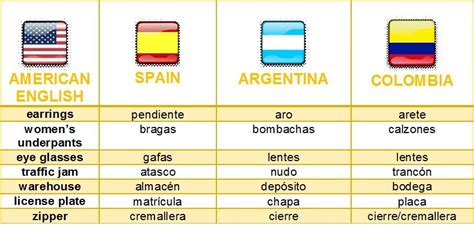
What makes Argentinian Spanish different?
You may wonder why Spanish in Argentina developed a different intonation. The main reason for this l...

Do you need to know Spanish to live in Argentina?
This is especially true if you travel to smaller, more rural areas. Though Buenos Aires is a big cit...

Can you live in Argentina speaking English?
Argentinians often speak English Young Argentinians and people in international business and local t...
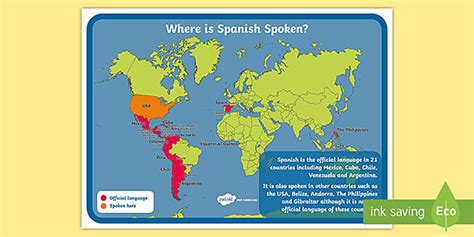
Where is the purest Spanish spoken?
Tied with Mexico for the purest Spanish in Latin AmericaSpanish in Latin AmericaAmerican Spanish may...
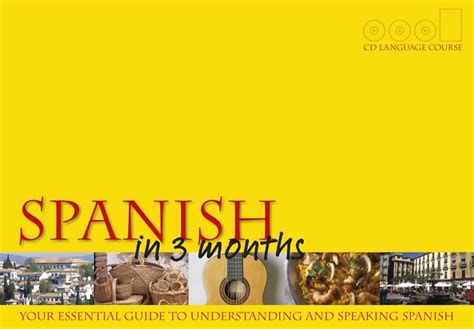
Can I learn Spanish in 3 months?
It is possible to learn Spanish in 3 months, but it is true that to fully master the language to a n...
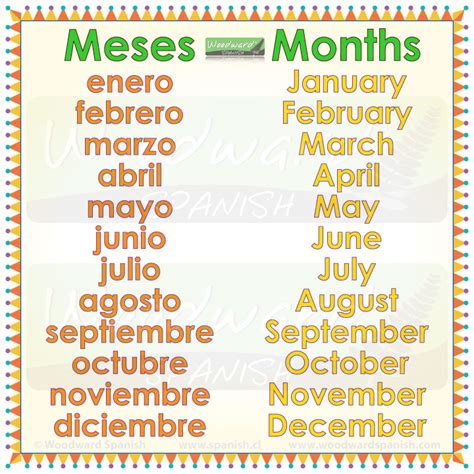

Is 3 months enough to learn Spanish?
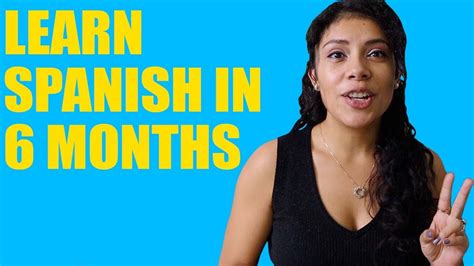
Can you learn Spanish in 6 months?
So, to answer “how long does it take to learn Spanish” – it should take you about 24 weeks to learn...

How much money do you need to live comfortably in Argentina?
The minimum cost of living will be about $800 per month ($500 for rent, $150 for food, and $150 for...
Leave a Comment
Get Link! 📱

Last answers
- Is Argentina a beautiful country?
- Why do people go to Argentina?
- What language do Argentina speak?
- Privacy Policy
- PR & Marketing
- Privacy Policy
Girl about the Globe
Making solo travel easier.

- How To Travel Within South America
A South America Backpacking Guide
South America is a fascinating continent to discover as a solo. I spent 21 months in South America and fell in love with the continent. If you are unsure how to travel South America or which country to travel to, this article covers an introduction to each country, budget, safety and how to travel around.
Discover the best way to travel South America, the best time to visit South America (depending on which countries you choose to visit) and recommended South America tours. Just read the relevant section or the whole article for your South America trip.
N.b. For every booking made through this article, I donate money to projects helping vulnerable girls about the globe. Thank you for helping to make a difference to their lives.
- South America
Safest South American Countries for Solos
Best country to visit in south america, the galapagos islands, falkland islands, french guiana, the language spoken in south america, south america tours.
- Budget for South America
- Itineraries for South America

South America Travel Guide
Any trip to South America will greet you with a melting pot of cultures and dance, from samba in Brazil to the Argentine tango, this continent has a soul with a Spanish flavour.
It has everything from the world’s driest desert to tropical rainforests, snow-capped mountains, volcanoes, and colonial towns, and is one of the most bio-diverse continents with high-altitude cities. It is also home to coffee plantations, and ancient civilisations such as the Incas, and the Amazon River.
It is a continent that is popular with backpackers keen to experience South America travel. But it isn't for the first-time solo as you do need some basic Spanish to get by (in the Spanish speaking countries). However, many solo women travel within South America without any problems.
Society is mainly a macho society so expect attention from males whether it’s just shouting “Linda” from afar (which means beautiful) or asking you to dance. If you travel to rural areas they may not be used to seeing a woman alone so expect even more attention.
In the more developed cities such as San Jose, Medellin or Rio de Janeiro you can dress however you like. With local women showing off their curves, there’s no need to dress conservatively in these cities. Crime is the biggest issue here so be careful of your belongings, and if you go off the beaten path, buddy up with other travellers or take a tour.

How to Travel Within South America
When you travel to South America, if you choose to travel to the least developed countries of Bolivia, Peru and Ecuador, it can be a culture shock, especially in Bolivia, firstly due to its poverty, and second because of its altitude.
Although crime is increasing against foreigners Bolivia is still one of the safest places in South America. Being the cheapest means that it’s popular with other travellers so there are plenty of people to buddy up with.
Avoid taking any jungle tours alone and watch for petty thieves at marketplaces and bus stations. Be careful at night during border crossings and in the city of Oruro. Steer clear of El Alto if you can as it has a reputation for pickpockets and robberies.
Unlike Central America, South America has vast distances and flying from country to country is not the cheapest method to get around. Although LAN Airlines operates within many countries in South America, the routes are not generally direct.
The costs of flying internationally can be expensive compared to flying internally within countries. A good tip here is to cross the borders by bus and then fly within the countries to maximise your time and budget.
Although bus travel is the cheapest method of travelling around the continent, you need to be cautious of your belongings on some of the border routes. Crossing from Colombia to Ecuador is safer during the day. If you have to travel overnight make sure that your route is safe.
Night buses in Peru are safe and so is the route from Ecuador to Peru. If you do travel by bus, expect some routes to have curvy roads if you’re going through a mountain pass.
Hiring a car isn’t really advised as the traffic can be chaotic and you don’t want to be driving anywhere alone which is off the beaten track. There’s also the chance of being stopped by corrupt police so use other methods of transport if you can.
If you have time, taking a river cruise through the Amazon is a unique way of getting from country to country. If you travel from Colombia to Brazil, for example, you’ll need to allow a few days to get there. Some islands are too far to travel by sea so if you want to visit San Andres, Easter Island, the Galapagos Islands or the Falkland Islands you have to fly instead.

The town of Zipaquirá near Bogota, home of the Salt Cathedral
Safest Countries – Chile, Argentina
Most dangerous – Venezuela, British Guyana
Solo travel rating (out of 5 stars for ease of travelling around and safety)
Argentina – 4 stars
Brazil – 3 stars
British Guyana – 2 stars
Chile – 4 stars
Colombia – 3 stars
Easter Island – 4 stars
Ecuador – 3 stars
Falkland Islands – 4 stars
French Guiana – 2 stars
Galapagos Islands – 4 stars
Paraguay – 4 stars
Peru – 4 stars
Suriname – 3 stars
Venezuela – 1 star
This article also covers the safest countries in South America and gives the overall safety score and natural disaster index for each country.

Medellin in Colombia
With South America being a diverse continent you may want to plan your trip depending on what interests you. Below is a summary of what each country is known for to help you decide which country to visit:
Argentina – Tango, steaks, wine, ancient caves, trekking, whale watching, Iguazu Falls, stunning scenery.
Bolivia – The highest national capital in the world, salt flats, traditions, salt hotels, volcanoes, coloured lakes, and flamingos.
Brazil – Iguazu Falls, the World’s largest inland wetlands, carnivals, Amazon, wildlife, beaches, and one of the most beautiful bays in the world.
Chile – Easter Island, star gazing, vineyards, glaciers, hiking, beaches, desert.
Colombia – The Andes, coffee plantations, Amazon, Caribbean coastline, dancing.
Ecuador – Wildlife, Galapagos, jungle, chocolate, co ee, modern cities, water sports.
Falkland Islands – British, landscape, sea life.
French Guiana – Space station, Devil’s Island, leatherback turtles
British Guyana – Sugarcane plantations, rainforests, mining, wooden cathedral, waterfall
The Galapagos Islands – cruising islands and unique wildlife.
Paraguay – Rural villages, jaguars, waterfalls, zip-lining, UNESCO villages.
Peru – Mountain scenery, Incas, Aztecs, Machu Picchu, trekking, national parks, jungle, festivals, Lake Titicaca.
Suriname – Eco-tourism, tropical forest, nature reserves.
Uruguay – Beaches, cattle ranches, mountains, countryside
Venezuela – Angel Falls, Caribbean islands.
There is more to Argentina than the leg-flicking tango and the Falkland Islands. The Argentines enjoy good wine and fantastic steaks and are passionate about their culture. The south of Argentina has stunning lakes and fjords within the Patagonia region, making this an ideal place to explore if you are a nature solo.
On the whole, Argentina is a great destination for solo females. Buenos Aires and other cities and towns are safe, and there is a good traveller network in the country. Locals are friendly, especially the younger generation who are open to mixing with travellers. The only thing to be aware of is the stray dogs that hang around some of the bus stations. Just be cautious when approaching them.
Argentina isn’t that cheap to travel, so be prepared that travelling here will eat into your budget. Airlines such as Aerolineas and LADE fly domestically within the country, but buses are generally less expensive (although they still are costly).
There are bus companies for long-distance travel and some with fully reclinable seats. If you can’t afford a seat that goes all the way back (a coma), then take a semi-cama instead, which is still comfortable. If you plan to travel in the high season, buy your ticket before, or opt for a South Pass, which allows unlimited travel for several days and starts from $80 per trip.
There are tourist trains such as the Tren a las Nubes which runs from Salta through Santa Rosa de Tastil and San Antonio de Los Cobres (and more) back to Salta. Or you can take La Trochita, which is a steam train known as the Old Patagonian Express. The ride takes 3.5 hours from El Bolsón to Esquel. In towns, it’s easier to opt for shared taxis which operate on fixed routes and leave when the taxi is full.
If you prefer boat rides, there are boats on the Patagonia side that take you into Los Glaciares National Park and Nahuel Huapi National Park. The distances in Argentina can be very long so plan your trip with rest days if you are travelling overland.
Check Rome2Rio for travel within Argentina
Best time to go to Argentina – October to June.
Highlights:
- See fjords in Patagonia
- Get inspired at Iguazu Falls on the Argentine side
- Sample Argentina’s wines in a winery
- Dance the tango in Argentina
* Click here for Argentina itineraries, prices, and start dates

The Bolivian Altiplano (photo @ Leonora Enking)
Bolivia may be poor, but it is rich in scenery. La Paz is the highest capital in the world and is home to the witches market, a spooky place with potions and skulls. Death Road is an attraction for bikers who come to experience the thrill of one of the world’s most dangerous roads.
The highlight of Bolivia is the Uyuni Salt Flats. These blinding white surfaces are the world’s largest salt flats and can be reached on a day trip from the small town of Uyuni through one of the many tour agencies.
The best way to see the salt flats, the bubbling geysers and the red lakes of the Bolivian Altiplano is with a 4×4 tour that takes you overland. This is also a good way to travel overland from Bolivia to Chile through the Atacama Desert. Bolivia does have a poor road system, so a 4×4 jeep tour is an ideal way to travel around.
The buses here are cheap and give you the true local experience but expect to see some poverty at bus stations and also on the buses. Most routes don’t have bathroom stops, so expect to travel for a few hours without being able to get off.
There are direct buses from Copacabana to La Paz, for example. There is a Bolivia bus-train that will take you from Sucre to Potosi. It’s a converted bus that runs along the railway which is quicker (the actual bus will take 4 hours) and cheaper.
There are trains here but they are generally slower than buses. Flying can be quite costly so consider taking a tour if you don’t fancy a rough bus ride.
Check Rome2Rio for travel within Bolivia
Best time to go to Bolivia – April to October.
- Get spooked at the witches' market
- See the salt flats (Salar de Uyuni)
- Potosi mines
* Click here for Bolivia itineraries, prices, and start dates
With a country the size of Brazil , it’s wise to plan a route if you are limited on time. Brazil is huge! Most people visit Rio de Janeiro, which is home to two of the Seven Wonders of the World – the Christ the Redeemer and the Harbour of Rio de Janeiro. Travellers also flock here for the famous Copacabana Beach and Sugarloaf Mountain.
Foz do Iguaçu is another population destination as the gateway to Iguazu Falls, one of the most magnificent waterfalls in the world (shared with the border of Argentina). Then there’s Salvador, with an Afro-Brazilian culture and the financial centre of Sao Paulo.
Escape the cities and relax at Ilha Grande, one of Brazil’s most beautiful islands or head north into the Amazon Rainforest to learn more about this mighty river and see the wildlife which lives there. You do need to be careful in this country as it has a high crime rate, so don’t walk around with any valuables on show and be careful at ATMs.
If you step outside of the main tourist destinations and cities, you may not encounter many other travellers. Take caution if you go off the beaten track, especially if you want to go deep into the jungle. Look for larger groups or team up with fellow travellers if you want to explore lesser-trodden routes.
Brazilians are really friendly, but knowing some Portuguese phrases will help here as they don’t speak much Spanish or English. Brazil offers air passes to make the most of flying around the country, and you can buy tickets at the airport or shopping malls with Tam, a local airline.
Trains offer a more scenic route than some of the bus journeys, which can be up to 36 hours in some places, but you can get different classes on buses. If you’re on a budget, take an economy bus which is actually quite comfortable, or there are deluxe buses for those who prefer more comfort.
Check Rome2Rio for travel within Brazil
Best time to go to Brazil – March to June.
- Rio Carnival in March 2019
- The stunning Iguazu Falls
- Christ de Redeemer
- Rio de Janeiro Harbour
* Click here for Brazil itineraries, prices, and start dates
Chile is a beautiful country with welcoming locals. Known for its vineyards, endless stretches of northern beaches, and the Atacama Desert – the driest desert in the world, this South American country is both safe and extremely scenic. Santiago is a sprawling capital, so choose which area you want to stay in. Bellavista is a funky area with many cafes and bars, making meeting others easy.
Valparaiso is nearby and just a 1.5-hour bus ride from the capital. This port city is known for its colourful clifftop houses. Then there is Iquique for the beach, dunes and waves, and Chile’s very own lake district, which stretches from Puerto Montt to Temuco.
The Chilean fjords are in Patagonia, and you can take sailing trips through this region of fjords and glaciers. Torres del Paine is on the Southern tip. This is one of the most gorgeous places to visit in the country. You can trek or take a van or catamaran tour through the national park to see breathtaking glaciers and green lakes.
Distances can be far here, but the country does have great overnight buses, and the routes are scenic and comfortable. The buses aren’t that cheap though and can take hours, especially if you are travelling south.
For internal flights, look at different airports with Sky Airlines. Sometimes it can be cheaper to fly from an alternative airport and take a bus to that destination. Locals hitchhike here, but like anywhere, use your own discretion and follow your gut instinct if you decide to join them.
Getting to Patagonia, however, is a different story. There is no direct road from Chile, so taking a flight or a boat is the only option. Although once you’re there, you can sail around the fjords.
Check Rome2Rio for travel within Chile
Best time to go to Chile – September to April.
- Atacama Desert
- Explore Torres del Paine National Park, Chile.
- Take the 6-hour flight to Easter Island , the world’s most isolated inhabited island known for its giant moai statues and named after the day it was discovered.
* Click here for Chile itineraries, prices, and start dates
Colombia , once declared too dangerous to travel to, is now a magical realism for tourists with Caribbean beaches, coffee plantations and the Amazon.
Bogota is the capital and although some areas can be a bit sketchy, La Candelaria is a safe, vibrant area with bars and restaurants. Visit the Salt Cathedral in Zipaquira or the Tatacoa Desert a six-hour ride away from Bogota. The coffee region is the perfect place if you are in search of some nature. Take a Finca tour in Salento, or hike through the Valle del Cocora to see giant wax palms and hummingbirds.
Medellin is an amazing city with stunning views from the Metrocable. Explore the lakes of Guatape on a day trip, then head to Cali, home of Colombia’s salsa dancing. The Caribbean coast is a must-see. Spend time in Cartagena admiring the colourful old town, then hike through Tayrona National Park or experience the Lost City Trek if you have four extra days to hike. Colombia also has the Amazon with Leticia as its gateway to the river.
Although Colombia gets a bad rap in the press, the majority of areas are fine for a solo female. Safety has improved over the last decade, but if you walk around with valuables on show, you are more likely to be robbed. Avoid certain areas, especially the more remote areas and ask locals for advice on which places to avoid.
There are cases of buses being held up, so avoid night buses on particular routes, such as Bogota to Quito. Instead, travel during the day across the border. Only carry as much money as you need, and don’t keep all your credit cards on you. There is guerrilla activity within parts of the Amazon, so avoid exploring by yourself.
Collectivos (minibuses) operate within Colombia . The cities of Bogota and Medellin have a great transport system with metro and bus services. If you take a taxi, use a taxi app and avoid hailing one in the street in Bogota. It’s fine to get one on the road in Medellin.
Buses will take you across the country, although you can find internal flights for a similar price (without the additional cost of your luggage). Most of Colombia is mountainous, so be prepared for some windy journeys.
Check Rome2Rio for travel within Colombia
Best time to go to Colombia – December to February.
- Relax on San Andres Island.
- Take the Metrocable in Medellin for amazing views of the city
- Stay overnight in the stunning Tayrona National Park
* Click here for Colombia itineraries, prices, and start dates
Ecuador may be small, but that doesn’t stop it from being diverse. From the colonial town of Quito to white water rafting in Tena, there is much to see.
Hike the Quilotoa Lagoon , go mountain biking at Cotopaxi Volcano, or get really adventurous at Banos where you can zip line to your heart’s content, whitewater raft down the river or just relax in one of the hot springs. There are so many waterfalls here that the whole ambience is relaxing enough. You can pay a visit to one of Ecuador’s indigenous tribes from Banos.
Ecuador is relatively safe, but just avoid certain areas of Quito at night. Be careful at bus stations and on buses, and keep your belongings close to you.
Allow plenty of time to get from place to place in Ecuador. The buses are cheap (approximately $1 an hour) but you can find yourself on a bus for hours or having to backtrack because of the bus routes. Because of the mountainous regions, roads here can also be curvy. Expect some high altitude too. It's easy to cross the border to Peru.
Night buses operate from Loja with Loja Internacional, leaving at 11 pm and arriving at Piura where you can take another bus to Mancora on the Peruvian coast.
To reach Ecuador’s Amazon, there are buses from Quito to Tena that take approximately 6 hours. Flying is easier as it only takes 30 minutes. There are daily flights from Quito and Lago Agrio (they don't operate on Sundays). It’s better to get a tour into the Amazon rather than travelling solo here.
Getting to the Galapagos Islands is best done by flying. You can take a flight from Guayaquil instead of Quito, which will save you some cash as well as flying into Santa Cruz and flying out of San Cristobal and travelling overland between. You can get between the islands via speedboat and take a tour around them.
Check Rome2Rio for travel within Ecuador
Best time to go to Ecuador – June to September
- Hiking the Quilotoa Lagoon
- The swing at the end of the world
- Standing on the equator line
- Watch wildlife on the Galapagos Islands
* Click here for Ecuador itineraries, prices, and start dates
The Galapagos Islands are welcoming to travellers and have a laid-back vibe. The Galapagos are world-famous and although there are 61 islands, there are only 13 main islands, with Isabela being the largest. The islands are known for their rich ecosystems and an abundance of wildlife, including sea lions, giant tortoises, flamingos, and albatross. Not to mention colonies of birds, including the blue-footed boobies.
The majority of Isabela (the main island) is only accessible with a tour guide which means you need to buy a tour at approx $130. This is on top of the national park fee you pay when you enter the islands. You can find free walking trails where you can see pelicans, sea lions, marine iguanas, and giant tortoises without a guide. You can hire bikes to get around the main island.
To island-hop independently, boats cost approximately $35 and take 2.5 hours from San Cristobal to Santa Cruz at 7 am or 3 pm. They return from Santa Cruz to San Cristobal at 7 am or 2 pm. Santa Cruz seems to be the main hub for the boats for all the islands.
Galapagos Conservancy has a detailed guide to each of the islands so you can decide which one to stay on. The Galapagos Islands are known for cruises and there are several tour companies. G Adventures offers a Galapagos Land & Sea adventure that explores the north and central islands aboard a vessel called Estrella Del Mar. Prices start from €1735 for 7 days from Quito.
- Taking a cruise around the Galapagos Islands
- See the giant tortoises at Charles Darwin Research Station in Puerto Ayora.
- See the Blue-footed boobies (a bird with blue-coloured feet)
* Click here for Galapagos itineraries, prices, and start dates

A Gentoo penguin on Carcass Island, The Falklands (photo @ Anita Ritenour)
The Falkland Islands are a group of islands off the coast of Argentina. There has been continuous conflict over the ownership of the islands, with the most well known being the Falklands War in 1982. The islands remain under British control.
The islands aren’t known as a prime destination, so the infrastructure isn’t really there, but there are taxi companies on the main two islands and a ferry which departs from New Haven to Port Howard. The Falkland Islands are hilly and known for being windy, so they are not the destination to head to for sunbathing.
However, if you are interested in wildlife, birds and penguins and are missing fish ’n’ chips, then head to the Falklands. Flights operate here once a week from Chile, but the cheapest flights tend to be from the United Kingdom.
Best time to go to the Falkland Islands – October to March
- The colony of King penguins
Click here for Falkland Islands itineraries, prices, and start dates

La Comte River, French Guiana (photo @ amanderson2)
French Guiana is an unusual place. This small piece of land in the northeast of South America is part of France.
You can travel by boat from Suriname across the Maroni River border to Saint Laurent du Maroni, French Guiana. This border town has a colourful fruit and vegetable market on Wednesdays and Saturdays. It is also home to Camp de la Transportation, a former prison camp with displays of the lives of the 70,000 convicts.
Kourou is home to the Guiana Space Center, but tours are in French. Cayenne is the capital, with Creole-style houses and a food market on a Friday night. There isn’t that much here except a nice waterfront and an old fort. The territory does have three nature reserves, a botanic garden and Devil’s Island, so it is ideal for those who love nature. Be prepared not to meet many other solos here, though.
The tourism infrastructure isn’t really in place, making it difficult to get around. There are small boats that operate along the waterways. To travel overland, there are minibuses, but they aren’t that frequent, so you need to plan your journey wisely.
Check Rome2Rio for the best ways to get around French Guiana
Best time to go to French Guiana – August to December
Highlights :
- Camp de la Transportation
- Relax on Devil’s Island
Guyana sits in the northeast of South America, bordering Suriname, Venezuela and Brazil. The majority of the country is covered in rivers and rainforest, with howler monkeys and tropical birds taking refuge in its vegetation.
Georgetown is the capital and there isn’t much to do here except walk along the seawall and see St George’s Cathedral – one of the world’s biggest wooden cathedrals. Outside of the city, you’ll find the spectacular Kaieteur Falls and the Iwokrama Canopy Walkway.
Minibuses travel around the country, but it’s not advisable to travel at night. Ferries operate across the main rivers. If you do travel here from Suriname, fly instead of crossing illegally on the water border. It isn’t usually on a South American bucket list, and unless you go on an organised tour, I wouldn’t recommend going here independently. There is crime in the capital, so there is safety in group travel.
Check Rome2Rio for the best ways to get around Guyana
Best time to go to Guyana – January to April
- Kaieteur Falls
Paraguay is sandwiched between Brazil, Bolivia and Argentina. It has had its share of wars on the continent, a civil war in 1947, and a long dictatorship that only recently ended in the late 20th century. The country is more for the intrepid solo, as you may not encounter many other solos.
Although it is bordered by other countries, the Paraguay River runs from the North to the South and divides the country into two regions. Asunción is Paraguay's capital. It is home to half a million people and was founded in 1537. The capital has a stunning pink palace, a colourful neighbourhood called Loma San Jerónimo and a promenade with a small sandy beach. Just be careful here at night.
Get outside of the capital and the Eco Reserva Mbatoví is the place for some adventure. As well as being home to armadillos it’s also the destination for zip lining and abseiling. Or you can just walk across the hanging bridges instead. Ybycuí is another national park with howler monkeys and colourful birds. Stay on a ranch, go horse riding in the mountains or visit the ruins of Jesuit colonies.
You can travel by bus from Asuncion to Cuidad del Este on the border of Brazil. From here, it’s a short bus or taxi ride to Foz du Iguazu where you can see the Iguazu Falls . Buses are the easiest way to get around and there are small minibuses too.
There are internal flights down to Cuidad del Este if you prefer not to take the overnight bus there. International buses also operate from Chile, Argentina, Uruguay and Brazil.
Check Rome2Rio for the best ways to get around Paraguay
Best time to go to Paraguay – June to August.
- See the flamingos at Central Chaco Lagoons
Peru is one of the most travelled destinations in South America, with many people coming here for Machu Picchu, the ancient Inca city. There is so much to see here, from Lake Titicaca, which Peru shares with Bolivia, to the Nazca Lines – large ancient geoglyphs in the Nazca Desert.
Lima is Peru’s capital. In the heart of Old Lima, you can find the cathedral, museums and the Archbishop’s Palace. The best place to stay here to meet others is the coastal district of Miraflores with a cool promenade. There is so much history in Peru. Visit the Sacred Valley, the red walls of Pisca, and Ollantaytambo – a well-preserved fortress that looks over the river valley.
Cuzco is the city of churches, but you can also do adventure sports here too. Then there are the floating islands where you can visit the indigenous Uros tribe on Lake Titicaca. The coast of Peru is known for surfing, so spend some time in Mancora or Huanchaco if you want to experience the beach and waves.
Peru can appear not as friendly as other South American countries. Begging is increasing within the tourist destinations, and as a solo, you may encounter stares from the locals. As in any other city, be careful with your belongings in Lima and don’t walk about at night (Cuzco is much safer). The north of Peru does not have that many tourists and parts of the country are out of bounds, so check Foreign Office advice or use a tour company if you are unsure of where to travel.
If you are travelling solo in Peru, not all indigenous villagers will welcome you; some remote Andean villages, which live in complete isolation, are not keen on visitors, so stick to the tourist route when travelling alone or hire a Quechua-speaking guide for the more remote areas. You can experience altitude sickness here, so be careful if you’re exploring places alone if you’re feeling unwell.
Surprisingly Peru has a great bus network. The night buses here are the easiest way to get around as the distances can be long. On night buses an evening meal, blanket and pillow are usually included (even if you just choose a ‘semi-cama seat). PeruRail operates the trains which depart from Aguas Calientes to Cuzco.
You can also fly internally if you have limited time to see everything. Be careful if you fly from Lima to Cusco as you could experience altitude sickness when you arrive. Allow a couple of days longer here to acclimate to the height.
Check Rome2Rio for the best ways to get around Peru
Best time to go to Peru – April to May
- Machu Picchu
- The ruins at Ollantaytambo
- The Uros people on Lake Titicaca
- Take a flight over the Nazca Lines
* Click here for Peru itineraries, prices, and start dates
Surprisingly Suriname is a great eco-destination. More than 90% of the land is covered by rainforest. The Amazon River runs through this former Dutch colony.
Paramaribo is an interesting capital with old wooden colonial buildings, but there isn’t much tourism in the city centre except a big tourist sign saying, ‘I love Suriname.’ You will find a mix of religious buildings here, from Hindu temples to mosques, synagogues and churches, and interesting colonial buildings along the riverbank to stroll past.
You can also spot turtles and dolphins in its waters and take a tour to get up close and personal to the sea life. Venture away from the capital and explore nature along the Amazon River. Stay in a jungle lodge along the riverbank for just long enough to get your nature fix before heading back to the city.
Suriname is one of the worst places in South America for attention. Expect to hear men of all ages making the “pssst” sound as you walk past. This isn’t just aimed at foreigners as the local girls receive it too. Just be prepared for it before you arrive. Suriname can be expensive due to a lack of tourists, but there are mini-buses here and two local airlines.
Best time to go to Suriname – August to November.
Highlights:
- Stay in an eco-retreat along the Amazon River.
- Colonial buildings in Paramaribo.
Uruguay is one of the smallest countries in South America. It has a similar culture to Argentina, with a similar-sounding Spanish accent. The people are laid back and are proud of their country.
Montevideo is the country’s quirky capital. It’s worth doing a walking tour here to learn more about the legends of this capital. The Palacio Salvo is their most impressive building, designed with a lighthouse on top. Check out the Uruguayan walk of fame too.
Colonia del Sacramento is a gorgeous little place with cobbled streets and a UNESCO historic quarter. It doesn’t take long to look around, but it is worth taking the 3.5-hour bus ride here from the capital. There are also boats directly here from Buenos Aires if you are travelling from Argentina.
Salto is the second-largest city with nice walks along the river or head to Termas del Dayman to relax in some hot springs. Punta del Este is Uruguay’s swanky beach resort where you can sunbathe during the summer months. There is also something for the wildlife solo as the beach of Cabo Polonia has a large sea lion colony, which you can reach by 4×4.
You can reach Uruguay from Buenos Aires on a ferry for approximately $60 and once you’re there, they have an extensive bus network. Avoid hiring a car which can be expensive and travel any long distances by bus. There’s a train that will take you to Santa Lucia but it only leaves once a day and other trains only carry cargo
Check Rome2Rio for the best ways to get around Uruguay
Best time to go to Uruguay – December to March.
- Cobbled streets of Colonia del Sacramento
* Click here for Uruguay itineraries, prices, and start dates
Travelling to neighbouring Venezuela is a country off the beaten path. Travelling around Venezuela is currently unsafe with most travellers sticking to Isla de Margarita. Outside of here, there’s virtually no travellers. If you do get a chance to visit Venezuela when it becomes less dangerous, flying is exceptionally cheap and beats the air conditioning that you get on the buses.
Best time to go to Venezuela – December to April.
- Angel Falls

Road to Monte Fitz Roy, Patagonia, Argentina
Spanish = Argentina, Bolivia, Chile, Colombia, Ecuador, Paraguay, Uruguay, Venezuela. The easiest country to understand Spanish in is Colombia, the hardest is Chile. Argentina and Uruguay have their own accent and pronounce ‘ll’ as ‘sh’ instead of ‘y’
Dutch = Suriname
English = Guyana
French = French Guiana
Portuguese = Brazil

South America can be a bit intimidating to travel through if you don’t know any Spanish. The continent is so vast that booking a tour of South America ensures that not only will you feel supported during your stay, but your whole South American trip is taken care of for you, and all you have to do is just turn up! It makes it so much easier.
The tours can differ according to activities and depending on who you have in your group, so check the daily itineraries to see which one is the perfect fit for you. Below are our recommended solo female-friendly South America tour companies.
G Adventures South America
G Adventures is a responsible tour company that mainly caters for budget travellers. Their tours include active and classic tours, National Geographic Journeys, and tours in South America for 18s to 35s. They have tours for every type of solo, and most have a maximum of 15 people.
G Adventures South America tours range from a 5 day Bolivia Express seeing salt flats and desert landscapes, a 17 day Buenos Aires to Rio de Janeiro tour, to an epic 51 day Rio to Lima adventure exploring Machu Picchu, markets, and so much more.
Once you book your trip, you pay extra for any excursions you want to do when you’re there. If you are planning on seeing more than one country. I have personally been on a G Adventure South America tour and recommend them as a solo female-friendly company. For my G Adventures South America review and other South America tours reviews read here.
* Click here for all South America tours, itineraries and prices: G Adventures
G Adventures Machu Picchu & Inca Empire – 15 Days
If seeing Machu Picchu is on your travel wish list, this 15-day tour takes you through Peru to see the best of the Incas. Beginning in Bolivia, you start in La Paz and end in Lima and embrace the cultures of both countries in-between. Over two weeks, you’ll experience the bustling market of La Paz, across the altiplano to Puno to stay in a homestay on Lake Titicaca before hopping on a bus to Cusco to prepare some traditional Peruvian cuisine.
The main highlights on this tour have to be the Inca Empire; the Sacred Valley, Ollantaytambo and of course, the Inca trail where you’ll be hiking through Andean scenery, and Incan ruins. You also visit a G Adventures-supported women’s weaving co-op and pottery making community. You’ll be staying in hotels, homestays and camping and travelling in many different ways including buses, ferries and hiking. All breakfasts are included as well as some additional lunches and dinners.
* Click here for tour information, prices and the full itinerary
G Adventures Patagonia – 14 Days
Discover Patagonia and Buenos Aires on this 2-week tour experiencing the best of this South American region. Learn how to tango in Argentina’s capital before exploring San Carlos de Bariloche on a bike tour. Then take one of the most scenic ferry cruises in the world in the Chilean Lake District before catching a flight to Torres del Paine National Park for stunning nature, waterfalls, glaciers, and turquoise lakes.
You’ll learn all about the glaciers with the help of a local guide and on a boat tour that takes you to the front of the glacier. The tour ends by seeing penguins as well as Seal Island, and Bird Island, before flying back to Buenos Aires. Accommodation in hotels with daily breakfasts included.
* Click here for tour information, prices and the full itinerary
G Adventures Galapagos Islands & Inca Discovery – 14 Days
This two-week tour is perfect for those who are short on time. You get to experience the Andes highlands and Ecuador plus cruise around the Galapagos Islands and snorkel amongst the sea lions at Black Turtle Cove. Starting in Quito you begin the tour on Santa Cruz after a flight to the Galapagos to see the giant tortoises that the island is known for. There is so much wildlife here from iguanas, to flamingos and numerous bird species that it is the perfect trip for the wildlife Girl about the Globe.
After the Galapagos Islands, you travel around Peru, cooking Peruvian dishes, seeing the Sacred Valley, and Ollantaytambo before hiking the famous Inca Trail through the Andes Mountains to the majestic Machu Picchu. Accommodation is on a boat for 4 nights, camping and hotels. All breakfasts and many lunches and dinners are included.
Intrepid Travel
Intrepid Travel is similar to G Adventures with an average of 12 people on each tour. They tend to use hotels instead of hostels and have a more comfortable style of accommodation hence the trips can appear a bit more costly than G Adventures. Their trips are carbon offset and range from an 8 day Inca Trail Express from Lima to an epic 24 day Galapagos & Peru Adventure travelling through Peru, Quito and the Galapagos Islands, with other trips in-between.
With both tour companies, you share a room with someone of the same gender or you can pay extra for your own room.
* Click here for all South America tours, itineraries and prices: Intrepid Travel
Intrepid Inca Trail Express – 8 Days
Retrace the steps of the Incas with this week-long trip to Peru. Hike ancient pathways along the Inca trail and see the best Inca sites that this country has to offer. The trip starts in Lima and finishes in Cusco. You get to explore South America’s oldest continuously inhabited city, Cusco, sample some Peruvian ceviche and see the old colonial influences in the city before heading to the Sacred Valley and Ollantaytambo.
There is the option to trek either the Inca Trail or Quarry Trail but you’ll need a good level of fitness for this adventure. Choose Route 1 and you’ll be staying in basic camping facilities, opt for a mix of camping and hotels on Route 2, or stay in hotels for the whole 8 days on Route 3.
* Click here for the full itineraries, prices, and start dates
Intrepid Patagonia Wilderness – 15 Days
If you are looking for a two-week tour, hiking through amazing scenery then this Patagonia Wilderness is ideal. From Buenos Aires to the remote wilderness of Patagonia, you can witness the giant Perito Moreno Glacier in Argentina, see the wondrous peaks and camp amongst them, and trek past glaciers and waterfalls spotting birdlife on the way.
The journey begins and ends in the Argentinean capital of Buenos Aires where you can sample tango, and the famous Argentina steaks. Accommodation is mainly in hotels with 3 nights camping under the stars. Daily breakfasts are included.
Sacred Land of the Incas – 15 Days
This 15-day trip encompasses the sacred land of the Incas with a trip to the Amazon jungle. From ruins to rainforest, it is a great way to experience South America’s different terrains.
Spend time in the Peruvian Amazon, cruising into the jungle on a motorised canoe before staying overnight in an eco-lodge and sleeping in the jungle. Learn about the medicinal uses of the Amazonian plants whilst spotting wildlife both during the day and on a night walk.
After the jungle, you get to travel to the famous Inca spots such as Ollantaytambo, the Sacred Valley, Cusco, Puno where you take part in a Lake Titicaca homestay, Puno and La Paz, where you’ll end your two-week adventure in the Bolivian capital, the highest capital city in the world.
You’ll be camping, staying in a jungle lodge and a hotel and have each breakfast included along with half the meals.

Day Tours in South America
Get Your Guide helps you to find top-rated activities and day tours in worldwide destinations including South America. Choose from a Cusco: full-day tour to Rainbow Mountain in Peru, a Christ the Redeemer train ticket in Brazil, or a full-day Torres del Paine tour in Patagonia. There are so many to choose from and it’s really simple to use. Just check the reviews, price and availability then book online.
* Check all tours, prices and availability for South America

The harbour of Rio de Janeiro
Travelling South America Budget
These budgets are based on a daily spend including accommodation (staying in a dormitory room in a hostel), food, water, transport (using local transport only), and leisure. You will need to add cost if you prefer to stay in a private room. Prices are quoted in Pound Sterling (GBP) and converted to U.S. $ (the conversion rate can differ slightly).
Budget – From £20 to £100+
The cheapest countries are Bolivia, Ecuador and Colombia. The most expensive are The Falkland Islands, Uruguay, and Guyana.
Argentina – £45 / $60 USD
Bolivia – £20 / $26
Brazil – £40 / $51
Chile – £35 / $45
Colombia – £25 / $34
Ecuador – £23 / $30
Falkland Islands – £100+ / $135+ (it’s easier to take a tour over several days)
French Guiana – £60 / $80
Guyana – £45 / $60
Galapagos Islands – £60 / $80 (not including cruises)
Paraguay – £30 / $40
Peru – £25 / $34
Suriname – £50 / $67
Uruguay – £65 / $87
Venezuela – £25 / $34

Itineraries for South America backpacking trips
Argentina & Uruguay – Buenos Aries, Montevideo, Colonia del Sacramento Colombia – Bogota, fly to Medellin, fly to Cartagena, Santa Marta. Patagonia – El Calafate, Glacier National Park, El Chalten, Rio Blanco Base Camp, El Chalten, El Calafate.
Ecuador & Galapagos – Quito, San Cristobal Island, South Plaza Island, North Seymour Island, Chinese Hat, Las Bachas, Santa Cruz Island, Floreana Island, Espanola Island, Cerro Brujo, Kicker Rock, San Cristobal, Quito. Brazil & Argentina – Buenos Aires, Iguazu Falls, Paraty, Ilha Grande, Rio de Janeiro.
Peru – Lima, fly to Cusco, Sacred Valley, Ollantaytambo, Inca Trail, Machu Picchu.
Argentina to Brazil – Buenos Aires, Colonia, Montevideo, Iguazu Falls, Paraty, Ilha Grande, Rio de Janeiro.
Peru to Ecuador – Lima, Paracas, Nazca, Arequipa, Colca Canyon, Cusco, Sacred Valley, Ollantaytambo, Machu Picchu, Cusco, Puno, Lake Titicaca, La Paz.
Amazon & Ecuador – Quito, Tena, Banos, Alausi, Guayaquil, Guayas River, Puerto Lopez, Machalilla National Park, Quito, San Clemente, Otavalo, Quito.
Colombia – Bogota, Villa de Leyva, Armenia, Calarca, Cocora Valley, Salento, Medellin, fly to Cartagena, Santa Marta, Minca, Taganga, Tayrona National Park, Lost City trek, Santa Marta.
Peru to Brazil – Lima, Paracas, Nazca, Arequipa, Chivay, Colca Canyon, Cusco, Sacred Valley, Ollantaytambo, Machu Picchu, Cusco, Puno, Lake Ti caca, La Paz, Uyuni, Salt Flats, Potosi, Sucre, Santa Cruz, Puerto Suarez, Corumba, Pantanal, Bonito, Iguazu Falls, fly to San Paulo, Paraty, Ilha Grande, Rio de Janeiro.
Cartagena to Quito – Cartagena, Santa Marta, Lost City trek, Taganga, Minca, Tayrona National Park, Santa Marta, Cali, Pereira, Manizales, Medellin, Bogota, fly to Quito, Cotopaxi, Otavalo, Quito.
* My first trip to South America was with G Adventures on their Southern Divide tour. Over 3 weeks we travelled from Peru to Bolivia and overland to Chile. The tour was amazing and I definitely recommend them if you are feeling nervous about travelling to this part of the world alone.
* Click here for South American itineraries, prices, and start dates

You may also like...

Leave a Reply Cancel reply
Your email address will not be published. Required fields are marked *
Contact Us...
Search the site...
The small print....
Girl about the Globe Copyright © 2012-2024
Web by Eldo Web Design Ltd

Why you need to learn Spanish in South America
By: Author Jaclynn Seah
Posted on Published: February 23, 2017 - Last updated: October 11, 2017
Categories Panama , Sponsored
For Singaporeans, South America is such a foreign and far away place. In 4 months of travelling around the South American region, I did not run into another Singaporean person. Asians in general are few and far between, but a Singaporean in South America seems extra elusive.
I found plenty of rare boobies in Galapagos but no sight of Singaporeans anywhere!
One unique thing about travelling this region is that a good percentage of Central and South American countries uses one language for communication – Spanish . Unlike Europe or Southeast Asia where each country has its own unique language and dialect, being able to speak conversational Spanish will get you very far in communicating around South America, and in fact the entire Latin American region.
How fluent in Spanish do you have to be to get around South America?
Lo siento, hablo un poco español! You don’t have to be super fluent in Spanish – I was anything but fluent when I first landed in Bogota, Colombia . I had done some basic prep using Memrise and Duolingo intermittently in the months to pick up some Spanish vocabulary before I ended up in South America, and even those scant basics proved to be quite helpful.

Perhaps my proudest moment – finding my way via collectivo buses from Palomino where I went tubing all the way to Baranquillausing extremely poor Spanish and smiling a lot
Two months into my journey and I can say that I’ve picked up enough Spanish to get around on my own fairly confidently and make myself understood in basic situations like ordering food in a restaurant, getting on a collectivo bus or telling people where I am from. I’m still not conversational in that I could chit chat comfortably with a taxi driver for a long journey, but it’s gotten to the point where if the Spanish speaker speaks a little more slowly, I can recognize key words and get the gist of some conversations.
Learning Spanish in South America
English is usually the most common travel language, but there aren’t a lot of people who speak it well. One common thing many travellers who are spending a fair amount of time in South America do is to take Spanish lessons at the start of their travels so they can communicate more easily in their time here.
Many cities and the popular tourist destinations offer Spanish lessons, both group and private sessions depending on your preference and budget. In Colombia and Ecuador, Medellin, Cartagena, Quito and Montanita seemed to be popular options for travellers who wanted to learn Spanish.

Ecuador’s capital Quito is a popular spot for Spanish lessons but for the geography and science enthusiasts who love seeing the wonders of nature, make sure you check out the equator line here!
My initial thought was that I wanted to spend more time exploring than staying in one place, so I nixed the idea of Spanish lessons because that seemed a little time consuming. But when the opportunity came up with Habla Ya Spanish School to do a work exchange in return for lessons and accommodation, I decided I couldn’t miss this opportunity and made plans to take a detour to Panama for a month to learn some Spanish for myself.
At that point, I had 2 months left in the region and was hoping to reach a level where i can be a little more conversant beyond 2 sentences, and I definitely want to come back to this region in future so I also needed to find a way to stay current when I went back to Singapore.
I speak English as my native language and fairly fluent Chinese, and while being bilingual has always been something awesome about the Singaporean schooling system, I’m hoping to become even more multilingual, or at least conversational in many more languages which is always useful as a traveller. It’s partly inspired by all these Europeans I’ve met backpacking around that region- the close proximity of all these countries and languages makes many of these travellers very multilingual which I’m quite envious of!
Why study Spanish in Panama?
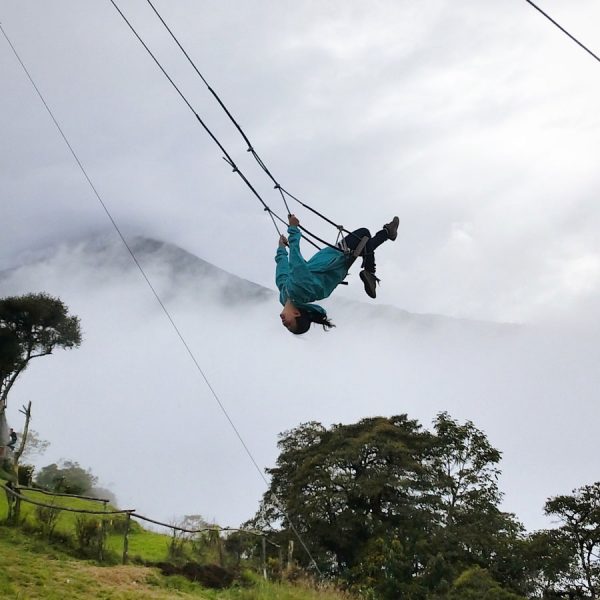
Well this is Ecuador Banos and not Panama, but it was here that plans firmed up for my visit to Panama even if it meant a little backtracking and flipping my plans around!
My detour to Panama is a little unexpected – it’s not a country that was originally on my plan to visit as I wanted to do South America and make my way down the western coast mostly, but I’ve heard some amazing things about Panama so I am excited about spending a month there.
What I like about Habla Ya is that you have the opportunity to travel Panama as you learn – with 3 schools in 3 different parts of Panama – Bocas del Toro, Boquete and Panama City that give your quite different experiences. I’ll be visiting all 3 schools and trying out different accommodations while I’m at it – staying at the school, doing a homestay and living in a hostel.
Stay tuned to my facebook and instagram to find out how my Spanish studies are going, as well as my adventures in Panama! Or check out Habla Ya on social media as well as I’ll be doing a little work for them on the side. Look out for my post at the end of my month in Panama where You’ll find my review of my languge studies with Habla Ya and whether I’m any sort of fluent by then! Read more about my experience learning Spanish with Habla Ya .
My Spanish lessons and accommodation in Panama were sponsored by Habla Ya. Check them out if you plan to learn Spanish in your travels around Latin America.
Thursday 17th of January 2019
Hey, thanks for the nice post! Sounds awesome :) I also want to go to Panama and learn Spanish, preferably a month like you and move around between them. However, I don't see this on their website in the volunteer section, like that you get accommodation... Can you help me find it? :)
Jaclynn Seah
Friday 18th of January 2019
It'll probably be easiest for you to email them directly and ask actually, they are pretty responsive! I collaborated with them through a posting that they left on another website. They're running a contest on IG now sponsoring flights and lessons if I'm not mistaken, do check it out!
Wednesday 22nd of March 2017
Hi Jaclynn! Nice article! Spanish is my mother tongue so I won't take classes :) but I agree.. South America is a great destination for learning spanish.. I found a lot of spanish students also in Guatemala, it's a nice country with friendly people, good prices and a relaxed atmosphere.
Cheers, Miguel.
Thanks Miguel! I'll probably have to do Central America properly at some point in the future... there's so much of the world to see :)
No products in the basket.

South America
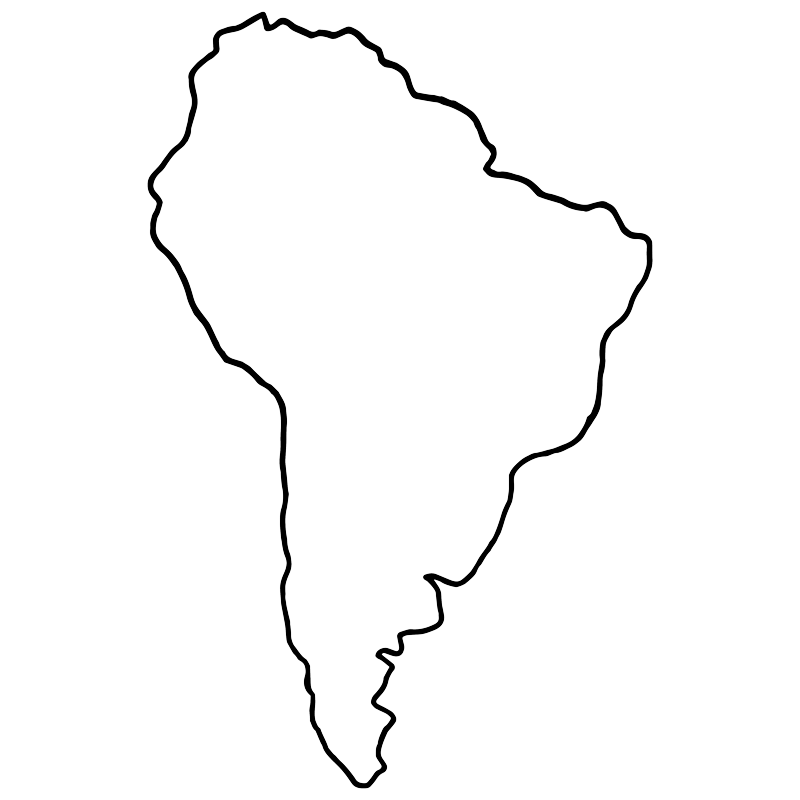
explore my guides by country
About south america.

When is the best time to go?
The best time to visit South America is the autumn, April-June. The temperatures from the hot summer have subsided a little, the cities (such as Rio de Janeiro and Buenos Aires), hiking trails in Patagonia and wine route in Mendoza are less crowded, and there aren’t so many tourists around. For the Galapagos Islands aim for June if you can – any month in this period is great but the cooler temperatures of June make for perfect exploring weather.
If you can’t do autumn, summer in South America is December to March and this is the high season for many areas in South America. It will be hot and busy though! Winter (June-September) in South America is the best time to do the Machu Picchu trail and spring (September-November) is the best time to see the wildlife in South America in the Amazon because it’s low water season.
Mollie's favourites
I HAVEN’T BEEN!
Okay as I write this South America travel guide I realise that I need to put this adventure at the top of my bucket list.
For now, enjoy the guest posts and please let me know if you have any tips to contribute, we’d love to host you!
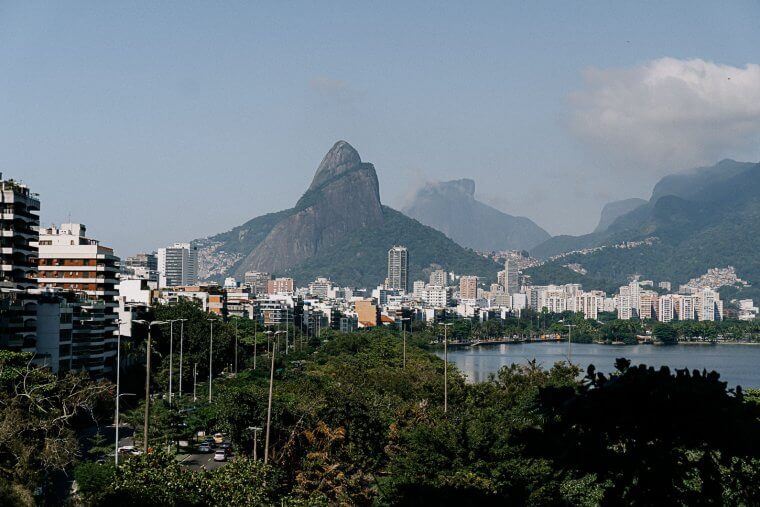
A weekend in Rio de Janeiro: A 3-Day Itinerary
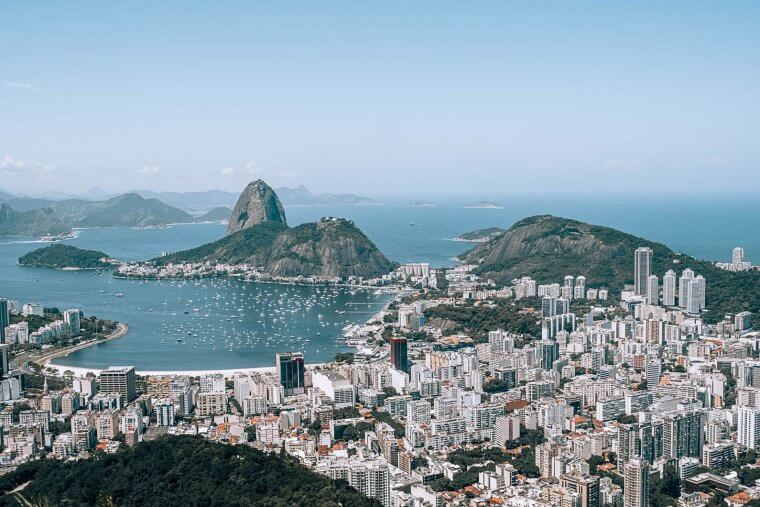
The Best Things to do in Rio de Janeiro, Brazil
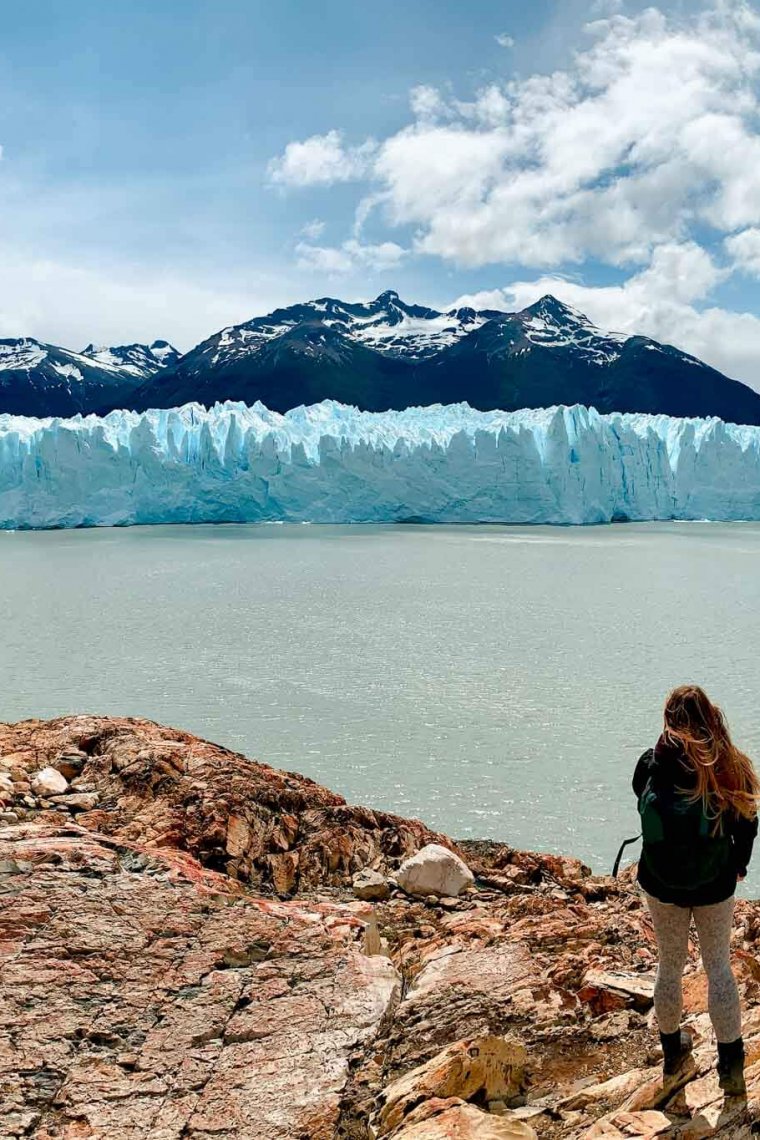
20 of the best things to do in Argentina
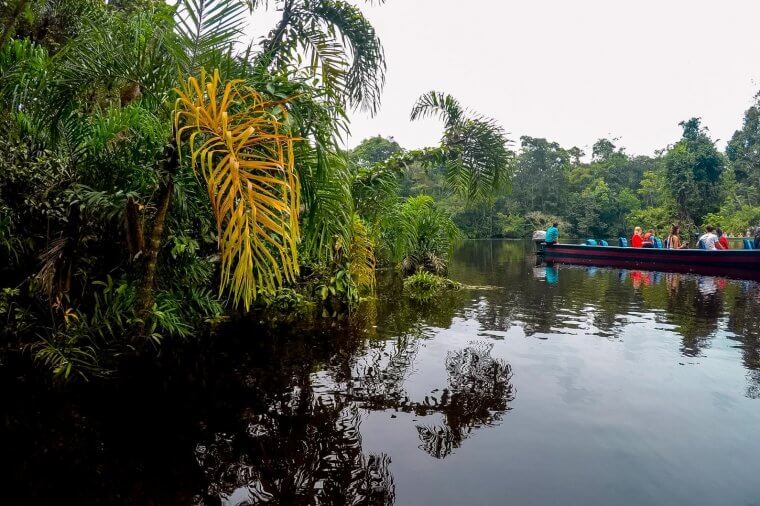
An eco-friendly guide to visiting the Amazon rainforest
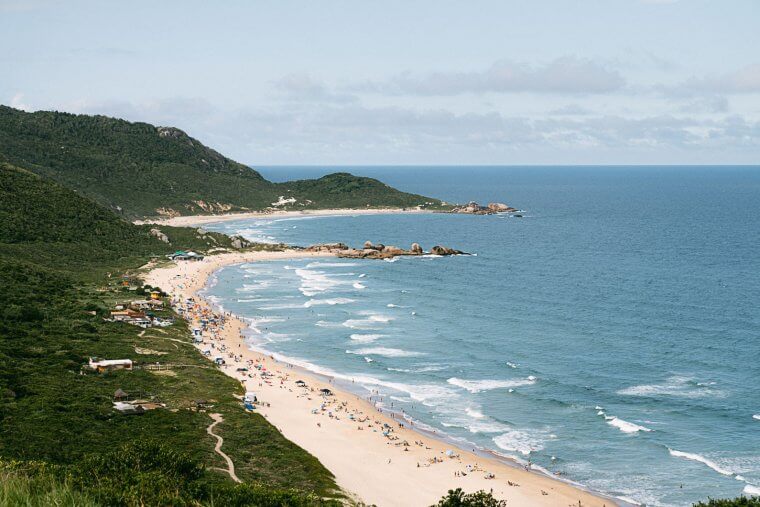
The best things to do in Florianopolis
Bucket list adventures in south america.
- background Layer 1 Hike Macchu Picchu, Peru
- background Layer 1 Witness Iguazu Falls, Argentina
- background Layer 1 Torres Del Paine National Park
- background Layer 1 Salt flats in Bolivia
- background Layer 1 Galapagos Islands, Ecuador
- background Layer 1 Amazon Rainforest
- background Layer 1 View from Sugarloaf Mountain, Rio
- background Layer 1 Road trip Chile
Join 7,000+ Other
In the facebook family. Meet like minded travellers.
South america travel guides.
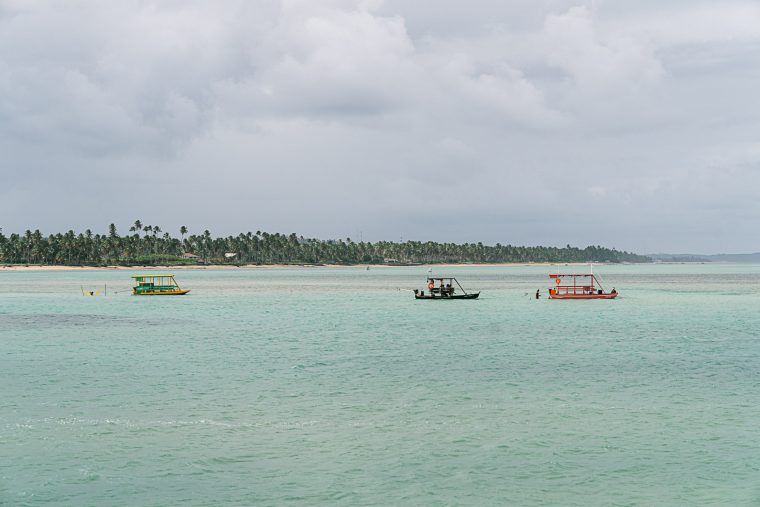
A 7-day Alagoas Roadtrip Itinerary

A 7-day Lençóis Maranheses itinerary

The best things to do in Lençóis Maranheses, Brazil
Privacy overview.
Green Mochila
Budget Backpacking in South America
🇨🇴”A la orden” – A Beginner’s Guide to Colombian Spanish
Colombian Spanish is one of the most varied we could hear all over South America. Its unique use of words, colourful expressions, and especially the slang of Colombia make it fun to listen to natives from different regions. We don’t think Colombian is the easiest form of Spanish to learn though. Their pronunciation can be hard to understand, especially on the Caribbean coast and in Cali, where many letters are dropped or even replaced (!). We hope this little beginner’s guide will help you find your way through a Colombian conversation!
Of course, there is not one kind of Colombian Spanish – each region has its expressions, its slang and its pronunciation. So there is much more to it for sure. But this is what we heard, what we understood, and found funny, useful or interesting.
Colombian Spanish Words & Slang
You’re sure to hear this sentence a dozen time each day! This is a singsong sentence used to call potential customers’ attention and is the favourite of basically every single seller in Colombia.
It is originally a military sentence meaning “ At your command “. In the other Spanish-speaking countries we’ve been to, it’s probably only used by the military. But in Colombia, the army of shop assistants, market sellers and street vendors have appropriated it. So much so that they also use it as “you’re welcome”, along with “ con (mucho) gusto “.
In the Antioquia department of Medellin, it is usual to add “ Bien pueda “, which can loosely translate as ‘Be my guest’.
Note that these phrases will often be sunk into a full sentence telling you how happy they are to see you and everything they have for sale. It might result in something like this: “ Alaordencaballerobienpuedabienvenidohaypulserashayponchoshaychompassincompromiso …”. The polite answer is simply “ gracias “.
One of those shops might well be a “ Fruver “, a shop selling “ Frutas y verduras ” (Fruit and vegetables). Colombia is famous for its wonderful fresh exotic fruit, so go on and indulge!
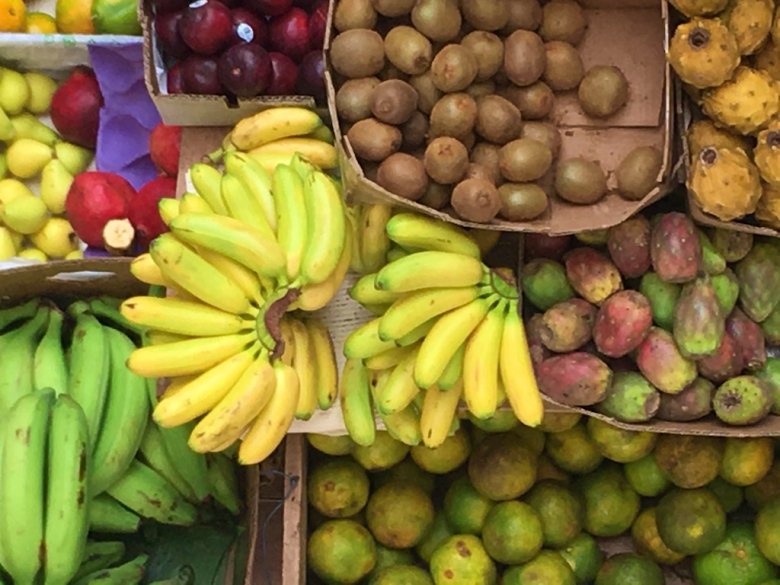
‘What else?’. This is how people usually ask their friends and relatives how they’re doing in Colombian Spanish. Don’t get it wrong: you don’t say that in the middle of the conversation, when the person has already told you something. No, this is the way you ask about someone as soon as you meet them. ” ¡Hola mami! ¿Qué más ?”
“ Papi ” and “ Mami ” are such sweet-sounding words! You can definitely hear them all around Latin America, but not half as much as in Colombia. Despite coming from the words meaning ‘mum’ & ‘dad’, they’re used as nicknames for your friends and relatives, whatever their age. Many Colombians, being very warm and outgoing, use them also when addressing strangers.
- Usted/Su merced
You surely know “ usted ” as the polite form for ‘you’, said when addressing someone with courtesy. Its use can vary from country to country: the Spaniards and the Bolivians (for example) employ it with most strangers eg. in shops, while the Argentinians save it for special occasions. Well, in Colombia, its use varies from region to region, and the meaning can also change!
In some parts of the country, it is still used as courtesy. In many regions, people also apply it to friends and family, as you would of “tu” (or “vos” in Argentinian Spanish … and in the south of Colombia!). This creates a shift, so something must be found for the polite form. In the department of Boyacá (north of Bogotá), people use “ Su merced ” (also spelt “ sumercé “), an archaic – and royalist – form that was generally abandoned when the Spanish conquistadors were sent back home. Except that in recent years, “sumercé” has also started to shift and to be used between friends and lovers.
What a mess! Unless you spend weeks rooted in one department of Colombia, you’re probably better off saying “ usted ” to everyone, everywhere! Keep in mind that Colombians are effusively polite and you might regularly hear them say “ Sí señor/Sí señora ” to their friend or even their child.
Why would Colombians come up with an alternative to the widespread diminutive -ito/-ita ?! I don’t know, but they do, all of them, and very often. “ Espera un momentico “; “ Quiero comer un pastelico “; “ Me gusta Green Mochilica “.
Even though “ que pena ” literally means ‘what a pity’, its is used in all Colombia as ‘excuse me’. You arrive late at a meeting? “ Que pena “. You said something that was not correct? “ Que pena “. You want to ask someone a question? “ Que pena “. Seems a bit excessive, huh. But it might come in handy when you want to ask for the way to your hostel.
I never heard the Spanish word “ pendiente ” as often as in Colombia. You may never have to use it, but you will hear it often for sure! What normally means “pending” in Spanish is used here in its broader definition. When you are waiting for someone, expecting something or attentive, you are “ pendiente “.
- Chévere, bacano, melo, chimba
Part of our ongoing list of ways to say “cool” around the world! Chévere is said practically all the time so make sure you add it to you vocabulary.
Colombians also use “ Bacano ” – reminding us of the Brazilian Portuguese “ Bacan ” – although not as much. In Cali, cool people say “ melo “. Lastly, you can hear the word “ chimba ” (often preceded with “tan”), meaning either ‘great’ or the contrary, depending on the intonation. “ ¡Que rumba tan chimba, parce! ¡Chévere! ” (What a great party, mate! Cool!)

- Parce, parcero
These words mean ‘friend’ and you can use them when talking to someone, in the same way you would use ‘mate’ or ‘buddy’.
Be careful though not to mix it up with “ parche “, which is a meeting place, a group of friends, or something/someone very cool. I guess you could say something weird like “ En el parche aparece mi parce, un parche del parche del parque “. But why would you.
Although in Spain they both mean ‘suddenly’, “ de pronto ” means in Colombia what “ de repente ” means in Peru, and that is… ‘maybe’. How the word to say ‘suddenly’ evolved to mean ‘maybe’ is beyond me and this little guide. But so it is.
Another example of a shift of meaning. If “ regalar ” means ‘to give as a gift’ in most Spanish-speaking countries, in Colombia it’s used simply as ‘to hand over’. It is therefore not uncommon to hear in a shop a customer say “ Señora, regálame esto ” before paying for it.
Contrary to what we first hoped, this has nothing to do with a “ vino tinto “, a red wine. In the country which is most famous for its cocaine and its coffee, the “ tinto ” is the latter.
But not the good brew; we’re talking here about the water-washed stuff, probably instant coffee, that you can find for 20 euro cent on the street and at the bus terminal. Certainly not good, but oh so common!
I promise, the day you manage to confidently shout a “ Seño ‘, regálame un tintico por favor “, they will ask you which part of Colombia you come from!
Keep reading: Our visit of a coffee farm in the ‘Eje cafetero’

I’m adding this one even though it’s a word typical of the region of Medellín. A favourite activity of the Medellinenses , “ puebliar ” is to travel around your own region in order to get to know the small villages (“ pueblos “) around.
Apparently, it’s known as “ pueblear ” in Mexico and in other parts of the Spanish-speaking world.
Start planning: Here’s why you should visit Medellín
A Few Colombian Spanish expressions
Finally, we’ve asked our Colombian Couchsurfing hosts about their favourite expressions. Excuse the awkward English next to them, I’ve tried to render their literal translation, in order to better give the image. Many thanks to Luisa, Juan, Emir, Diosimar, Johana and Rafa for their colourful contributions!
- “ Una golondrina no llama agua ” = one swallow doesn’t call the water
When one person cannot get someone’s attention, a group of people can.
- “ Le falta mucho pelo pa’ moño ” = s/he still needs a lot of hair for a bun
When someone hasn’t got the knowledge or the skill yet to do something.
- “ Una cosa es lo que piensa el burro y otra el que lo arrea ” = The mule thinks one thing, the muleteer another thing.
A person won’t do as you wish as long as they think differently
- “ Estamos cagados y el agua lejos ” = We’re in the shit and the water is far
We’re in a mess and the solution is nowhere near.
- “ Cada arepa tiene su queso ” = Every arepa has its own cheese
My favourite! Whoever you are and whatever you like, you’ll find someone who understands you. Arepas are a food speciality that you can find all around the country. They come in different sizes and shapes and usually have cheese inside or on top.
Intrigued? Have a look at our easy arepa recipe !
- “ No dar papaya ” = Don’t give papaya
A very important expression you will need constantly as a tourist. It means that you shouldn’t look dumb, easy to cheat or rob.
- “ Cali es Cali y lo demas es loma ” = Cali is Cali, the rest is mountains
Taken from the famous salsa song “ Cali Pachanguero “, this saying shows the love of the Caleños for their city in the valley. The rest up there is unimportant.
- “ Puro tilin tilin y nada de paletas ” = it roughly translates as Pure bling bling but no effort/no sweat
Quite simply: All talk and no action.
- “ El ojo ardiendo y le echan sal ” = His/Her eye hurts and they throw salt at it
When someone already has tons of problems and life comes up with even more. We’ve all known these situations, haven’t we?
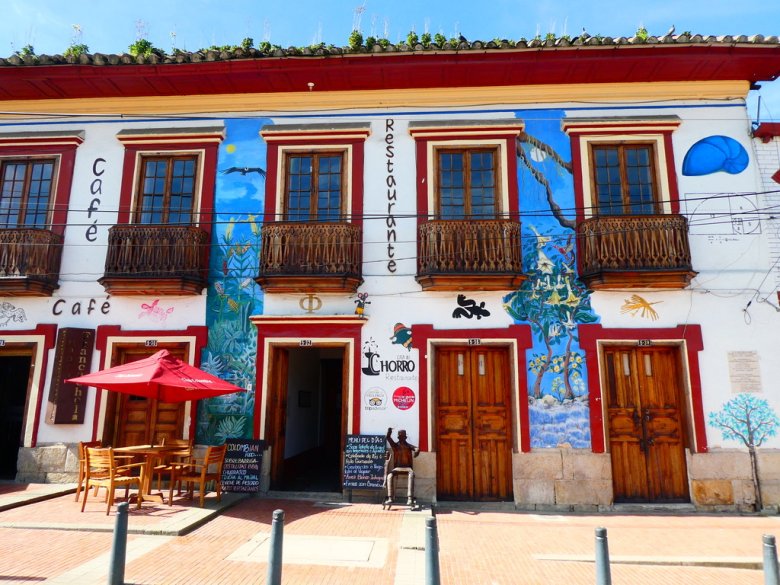
Colombian Pronunciation & Accents
As I said already, there are of course different pronunciations across that vast country. But to generalise and sum up what you might come across, let’s say that Colombians tend to swallow B’s and D’s , especially at the end of the word. All past participles will therefore sound like [-ao] or [io], for example sentada = senta’a or comido = comi’o.
Unlike with many other South Americans, there is no yeísmo in the Colombian pronunciation. It means that they distinguish the LL sound from a Y sound . In many regions, they make a hard “jhe” sound (like in Gara ge ) when pronouncing the LL letter and a soft “ye” sound (like in Yeah!) when pronouncing the Y letter. Consequently, “Yo soy de Medellin” will sound like “Yo soy de Medejhin”.
Go and practice! Read our recommendations on what to see in Colombia .
You will surely have fun noticing all the peculiarities of Colombian Spanish during your travels in Colombia. It is probably one of the variations of the language with the most fantasy, so if you know enough Spanish not to feel lost straight away, you’ll get along well with these words and expressions. Have fun, parce !
Now why not compare Colombian Spanish with Argentine Spanish ?
What is your favourite word or expression in this list of Colombian Spanish? Do you know any that is not in this guide? Tell us and we might add it!
Don’t miss any of our travel stories!
First Name:
Email address:
Not sure whether you want us in your mailbox? Read here what it means to subscribe.
By joining, you agree to share your email address with us (and Mailchimp) to receive emails from Green Mochila. You can unsubscribe at any time from any of our emails.
Share this post on:
Anthony fell in love with the world, and more particularly with South America. He wants to offer inspirational guides to the curious backpacker, travel stories to the online generation, and incentives for a more responsible and greener way-of-travel for everyone.
You could also like this:
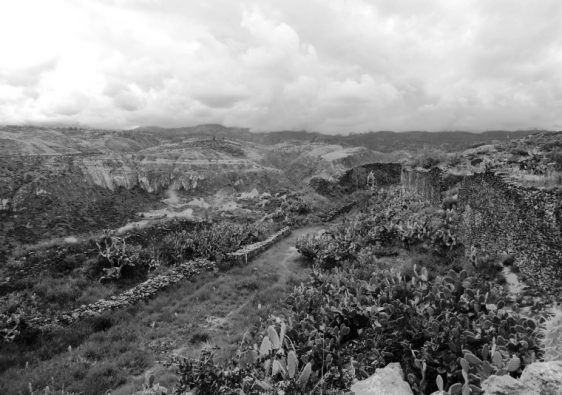
🇵🇪 A Few Keys to Understanding the Wari: Culture in the Shadows

🇺🇾 🇦🇷 How to Experience Tango in Argentina and in Uruguay

🇵🇪 7 Unusual Fruits from Peru that You Must Try

🇧🇴 Bolivian Street Food and Drinks: A Vegetarian Foodie Guide
11 comments.
My sister in law to be is Colombian so I will be sure to try some out on her soon. Great post for someone that knows nothing about the language.
Do try them out on your relatives and tell us how it went – we’re curious! Careful though, some of our words and expressions might be a tad too familiar 🙂
Will do when we see them soon.
This was such an interesting thing to learn about. I know very little Spanish actually, but it was fun getting to learn the different Colombian expressions. I love how you also explained the general pronunciation rules which can help understand natives more easily. This is a great guide and is definitely helpful for someone about to visit the country to familiarize them with the slang!
Thanks for your visit and your kind words, Ray! Who knows, maybe one day you’ll make it to Colombia and will remember some of these words.
What an interesting topic to write about! I just moved to Spain and there are many phrases and sayings here too that vary from South American Spanish. Languages are crazy fascinating! Thank you again! –Alex
Oh yes, we do love our languages. Travelling through South America without some secure notions of Spanish would have been much more difficult. Thanks for popping by Alexandra!
I’m rolling!! I love the literal translations of the expressions!!!
Yes, we were really surprised by some of them. We love how colourful expressions are in different countries!
Excellent blog post. I certainly love this site. Thanks!
Very good information about the Spanish that’s spoken in Colombia. Lucky me I recently found your site by accident (stumbled upon). I have book-marked it for later!
Leave A Comment Cancel reply
Your email address will not be published. Required fields are marked *
This site uses Akismet to reduce spam. Learn how your comment data is processed .
Privacy Overview
- Join as a Workawayer
- Join as a host
- Buy a gift membership
- Our community
6 Cheapest Countries In South America for your Next Gap Year
- Travelling Tips
- about 14 min

- Exchange rates : You may notice we’ve chosen not to include Venezuela or Suriname on this list. This is because they are infamous for some of the highest inflation rates in the world. While they can be considered two of the cheapest countries in South America, due to inflation it can be difficult to calculate a budget or predict costs for your trip.
- Safety : At workaway, we take safety incredibly seriously. South America often receives an unfair reputation as being unsafe which makes travellers apprehensive to add it to their bucket list. While it’s partly to blame by the drug cartels made infamous by Netflix’s Narcos, there is no reason why you should tarnish this entire continent with the same brush. Like most places there are safe areas, and areas best avoided. Use common sense, trust your gut and most importantly make sure you have travel insurance . It can cover you for lost or stolen items, medical expenses as well as cancelled travel or delays. Although an initial expense it can save you so much in the long run. Being able to speak a little basic Spanish will also help you in any tricky situations if you need to ask a local for help.
- Weather : As the climates are so varied, even between countries there is no particular time that is cheapest to visit South America. Travel during the shoulder season (the period between high and low season) for the best combination of good deals and good weather.
- Choose almuerzos : For the majority of the cheapest countries in South America, you will find a set lunch menu called an almuerzo. These usually consist of a starter such as soup, a main course, and a drink for a very affordable price. Not only are these a chance to try local cuisine, but they will also fill you up for a set fee making it easier for you to budget.
- Travel style : Remember when reading this list of the cheapest countries in South America that “cheap” is subjective. While certain expenses such as dorm rooms or dining out may seem affordable to some people, to other travellers these costs could be considered expensive. You may think it’s important to splash out on a private room or for a group tour to meet other people, while others may not. Your travel style will impact the cost of your trip so consider this as you research the cheapest places to visit in South America.
1. Colombia
Volunteer opportunities in colombia.
- Budget Hostel: $12 dorm bed/$30 private room
- Local beer : $1.00
- Budget Restaurant : Empanadas are the ultimate snack for those on a budget as they cost just 200-500 COP (around $0.06-0.15 USD.) Local street food in the cities is around 10,000-15,000 COP ($3-5 USD) per meal, but you’ll find it cheaper in the countryside at around 5,000-10,000 ($1.50-3 USD) per meal.
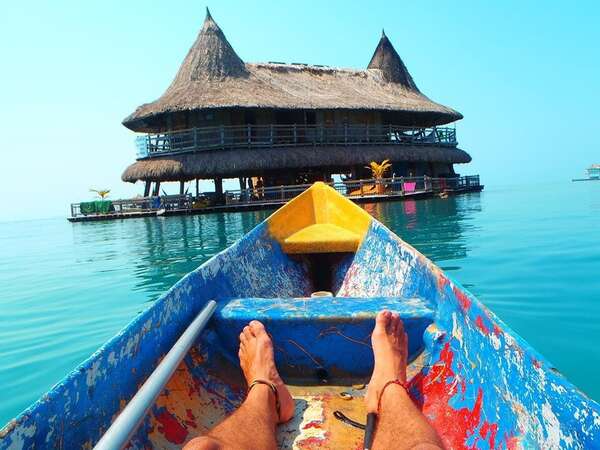
2. Paraguay
Volunteer opportunities in paraguay.
- Budget Hostel: 80,000PYG ($12.00USD) / $30 USD private room
- Local beer: $1.50
- Budget Restaurant per person: Street food 13,000-18,000PYG($2-3USD) Restaurant Meal (with drink) 3 courses $10

Volunteer opportunities in Peru
- Budget Hostel: $5.00 - $10.00 for a dorm
- Local beer: $2.00
- Budget Restaurant per person: $5.00 - $8.00

Volunteer opportunities in Ecuador
- Budget Hostel: Dorm $10.00 / Private room $20.00
- Budget Restaurant per person: $13.00 for 3 courses

Volunteer opportunities in Bolivia
- Budget Hostel: $6.00 - $9.00 for a dorm / $25.00 for a private room in a budget hotel
- Budget Restaurant per person: empanadas $1.00 / restaurant meal $4.00 - $8.00 / market lunch $2.00 - $3.00
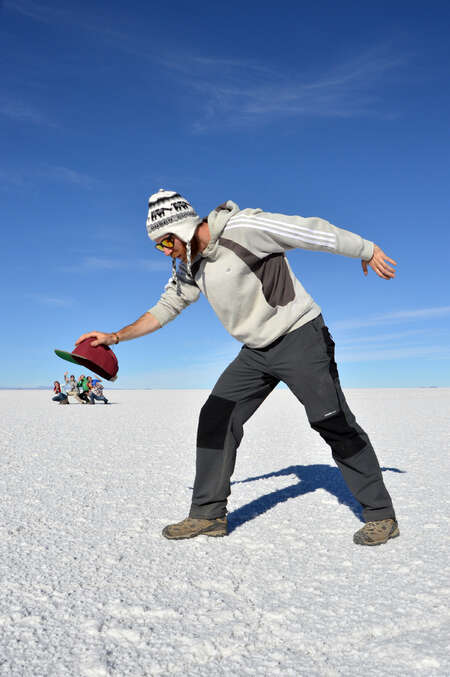
6. Argentina
Volunteer opportunities in argentina.
- Budget Hostel: $10.00 dorm / $13.00 in more touristy places like Mendoza. Camping is also common even in Patagonia with pitches costing around $5.00 per night.
- Local beer: $1.70 or opt for wine which is understandably cheaper at $1.20
- Budget Restaurant per person: empanadas $1.00 / restaurant meal $5.00
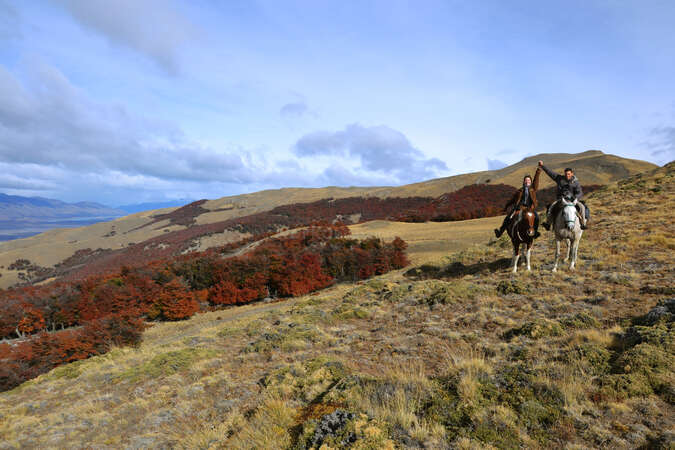
About Lauren
Growing up in a small coastal village in Scotland inspired Lauren to seek adventure and challenge the norm. Armed with just her backpack and trusty travel companion Darren, she quit her day job to liv ... show more... e her daydream and travel the world! After their first Workaway in 2017, they had officially caught the travel bug and decided to share behind the scenes from life on the road through their travel blog Faramagan. Their blog shares the tales (and fails) of two clueless millennials avoiding adulthood one adventure at a time with Darren the technical wizard and Lauren the content creator. When the backpack is off, Lauren can usually be found cooking, writing or attempting yoga while saving for her next plane ticket.
View all posts by Lauren
Visit Website
Share the Workaway idea
Join the Workaway community today to unlock unique volunteer experiences and free accommodation with over 50,000 opportunities around the globe.
You might also like
- Inspiration
- Using Workaway
- Workaway Ambassador
Your next adventure begins today
Join the Workaway community today to unlock unique travel experiences with over 50,000 opportunities around the globe.
Forgotten your password?
Workaway has committed over $20,000 USD from the Workaway foundation to help refugees from Ukraine.
Upon request all workawayers based in Ukraine will have their accounts extended for free until further notice.
Hosts in Ukraine have been temporarily disabled for safety reasons.
If you are a host and are able to take in refugees please add the information in your account and you will be added to our last minute host list .
Should you wish to donate and help please click here .
Most Common Spanish Phrases For Travelers [Survive South America]
![Most Common Spanish Phrases For Travelers [Survive South America] 1 a landscape of peru countryside](https://www.onmycanvas.com/wp-content/uploads/2018/12/a-landscape-of-peru-countryside.jpeg)
Unlike the US schools, we do not have a Spanish course or learn any foreign language at schools in India, especially in the small town where I studied. I grew up studying Hindi, English, and Sanskrit. I took a French language course during college, but a few classes and a French certificate was the farthest my foreign language aptitude took me to.
When I landed in Chile to teach English , I couldn’t even speak a few simple Spanish words coherently. I started living with a Chilean host mother who took upon herself to teach me the common Spanish phrases and words so we could communicate. Thus began my struggle of learning to speak Spanish in Chile.
I didn’t know then that the Spanish language would become one of my favorites, and also my third language.
Without trying to be melodramatic, I promise that if you start speaking even the most basic Spanish travel phrases when you are backpacking in South America , you would fall in love with this language; for Spanish is a passionate dialect. Spanish words and phrases cover almost every emotion; some of the feelings that can be described eloquently in Spanish are strangled by the lack of words in other languages I speak.
Was Learning Spanish Easy?
Neither did I practice Spanish before traveling to South America nor did I remember to carry a copy of travel Spanish phrases for emergencies.
Learning Spanish in South America was challenging. Trying to comprehend the fast Chilean Spanish, remembering the common Spanish words, and recalling them to frame even the most basic Spanish sentences drained my energy and left me good for nothing almost every day.
That was when I started referring to a Spanish workbook, wrote down the key Spanish phrases for beginners that I came across daily, scribbled the Spanish pronunciation in Hindi and English phonetics, asked a lot of questions, and spoke Spanish relentlessly. My efforts to learn Spanish bore results. Within a few weeks, I started speaking Spanish fluently and even cracked jokes in it.
Must Read: My story of learning Spanish in South America .
What is the aim behind this Common Spanish phrases for travelers guide?
When I returned to India after a nine-months-long South America solo trip, I started writing down the useful Spanish phrases that helped me survive in the continent . I had to help other travelers roaming around South America for I know how hard it gets if you can’t understand or speak at least some Spanish.
In this basic Spanish phrases guide, I have listed the everyday Spanish conversation phrases and the most important Spanish travel phrases you would need to make your way in the South-American countries. I have also provided the Spanish phrases in English, and with each phrase, I have written how to speak Spanish words (the ones involved) in English and Hindi phonetically. Otherwise, your pronunciation could be so wrong no one would understand you (speaking from experience).
I have also strewn around some insider tips throughout this list. I had to share my secrets (ahem treasure) from speaking Spanish for nine months, right?
The aim of this article is to provide you with a list of basic Spanish words and essential Spanish phrases at which you can rely on and refer to quickly on your trip. As you continue on your journey, you would even start remembering the phrases.
Related Read: Backpacker’s Guide to South America
Would these basic Spanish phrases also work in Spain?
The Latin-American Spanish is different from Castilian or Spain’s Spanish in pronunciation, vocabulary, and other nuances that I haven’t covered here as I don’t have much experience with the European version of the language. But my friends from Spain and Latin America told me that though the differences are visible, people from both areas can understand each other well.
So feel free to carry this list to Spain as well.
What are Cognates?
Before you read this article you need to understand cognates.
Spanish and English share a lot of cognates or words that have the same root but are pronounced and spelled differently in the two languages.
For example, directions is dirrecciones in Spanish, perfect is perfecto , impatient is impaciente , invitation is invitación , much is mucho , and so on.
These cognates, which you will come across frequently in the simple Spanish phrases listed here, would help you translate the Spanish words to English and vice-versa on your own.
My students who couldn’t say how are you in English tried to impress me by putting a “tion” at the end of every Spanish word when I asked them to translate the Spanish phrases to English. Thus skirt ( falda ) became faldation; school ( escuela ) became escuelation, and please don’t ask me for more.
Please don’t do the same, and instead, follow this guide to start speaking Spanish as soon as you land in South America.
You can also download the Spanish phrases pdf to bring it along on your trip. It is the same list but in a printable format. If at any point in your journey you start stuttering, you can show the Spanish phrase from the list to a local, and he or she would understand you.
But I know that you would never have to do that and you would start speaking at least the most used Spanish words by yourself.
Table of Content
To make the guide an easy read, I have divided the most important Spanish phrases for traveling into the following categories (click on any of the categories to jump straight to the required list):
- Common Spanish Greetings
- How to tell people that you don’t know Spanish (apart from shaking your head).
- Introduction/Introducing yourself.
- Common Questions in Spanish
- Food and Drinks. Basic Spanish phrases to use at a restaurant
- Miscellaneous But Absolutely Essential Spanish Phrases.
- Directions and Addresses. Making your way and getting around.
- Days of the week.
- Money or La Plata(for Chile).
- Emergency/Ask for help.
Disclaimer: If you are reading this article on your mobile and the tables aren’t displaying well, please switch to the landscape mode. Unfortunately, the tables aren’t integrated well with the mobile themes of WordPress, yet.
Basic Spanish Greetings
Though these are the main Spanish expressions used for greetings, some of the phrases would change as per the individual South-American country.
Insider tip 1 on how to pronounce Spanish words.
In Spanish, the h at the beginning of the word is silent.
Insider tip 2 on pronouncing Spanish words.
The letter t is spoken very softly in Spanish, and its sound is similar to the sound of the letter (त) of Hindi. English doesn’t have a similar sound, and English speakers can speak it as softly as they can to sound closer to Latinos.
How to tell people that you don’t know Spanish (apart from shaking your head)
And of course, if nothing works, act clueless, which you are.
Insider Tip 3 on basic Spanish:
In the Spanish language, most of the things are either male or female. The male version of a word is changed into the female version by adding an “a” to the end of the noun, the pronoun, and the adjective, mostly. So vegetariano becomes vegetariana , soup or sopa is female(in Latin America) hence the a at the end, et cetera.
Even if you guess the gender wrong or speak incorrectly, you wouldn’t make a blunder as you are still learning Spanish or have just started speaking it.
Tip 4 on Spanish articles:
Even the articles change as per the gender and the singularity of the noun. So while “el” is for the male versions, “la” is for females. As a learner of the language or as a tourist, you are perfectly okay even if you miss the articles.
Introducing yourself – Spanish Introduction Phrases
Insider tip 5 on the two different forms of spanish verbs for being:.
Don’t get confused between soy and estoy — soy is the more permanent form of I am, such as soy un hombre(I am a man) , soy vegetariano (I am vegetarian) , soy de la India( I am from India) .
Estoy is a more temporary form of I and signifies your current mood or action. Such as Estoy enfermo (I am sick), Estoy cansado (I am tired) .
Insider Tip 6 on framing simple Spanish sentences:
You can ignore the I or “Yo” while speaking. In Spanish, every verb changes as per the person and gender and singularity. So the noun is redundant in informal conversations, and most of the people I talked to in South America didn’t say “Yo.”
Tip 7 for using the correct Spanish words for an elder or for respect:
You can refer to the other person with a “ tú ” or an “usted.” T ú is f or people of your age or for informal conversations amongst friends and people you meet. But if you want to show respect, use usted.
Of course, as you are a traveler no one would mind if you refer to them with tú all the time. But if you are trying to learn advanced Spanish, you should use both the forms. For this article, I use tú whenever the second person comes into the picture.
Basic Spanish Questions
Tip 8 on one of the most common phrases in spanish:.
I don’t like – no me gusta. South Americans are expressive, and you would notice them talking about their likes and dislikes often. While traveling in Latin America, you would also have to speak about your choices frequently.
And if Latinos say that they don’t like something, respect that, for they appreciate it. And if you tell them that you don’t want or adore a particular thing or food, they would remember your preference. See how my Chilean friends were cooking vegetarian food and chicken for me at the Chile independence day when I told them I didn’t eat beef.
Food and Drinks. Useful Spanish phrases and words for travelers to use at a restaurant
Tip 9 on common spanish verbs:.
As I said above, Spanish verbs changes with the person, gender, and plurality of the noun. If the correct verb form is written in the sentence, you can understand how many people, which person (1st,2nd, or 3rd), and which gender is doing the action. Except when the noun is made up of a mixed group in which case you can assume the subjects to be male unless mentioned.
Tip 10 on one of the most common Spanish travel phrases:
The verb for want is “querer.” So you can say, “Yo quiero(verb form for I) un te.” I want one tea. You will need to say quiero many times while traveling, so please remember it.
Tip 11 on Spanish pronunciation:
South Americans roll the tongue while speaking r. But that is not true always. Let us skip the rolling r rule for this document. Maybe I will cover it later in another list of advanced Spanish phrases for travel.
Tip 12 on how to speak Spanish:
Latinos pronounce the v as b sometimes. And if you live there enough, you would also start saying it the same way.
Tip 13 on how to say the common travel phrases in Spanish without feeling the burden:
Saying a full Spanish sentence or the entire question or the phrase would be confusing in the beginning. You can just say the main words such as the nouns and the action while ignoring the articles, correct verb form, et cetera. People would understand. For example, instead of asking someone if they can click your photo, say one photo, please. (una photo, por favor)
Tip 14 on Spanish pronunciation:
In Spanish, j is pronounced as h. So tarjeta (card) would be spoken as tar-heta. This might help you at the metro and bus stations.
Tip 15 on some crucial Spanish words to know:
“Puedo” means can. Use generously. “I can” becomes “Yo puedo” or simply “puedo.” Remember that you can delete the “yo.”
Tip 16 on basic Spanish grammar rules:
In Spanish, you don’t say I am these many years old or I am sick. You say I have these many years or I have sickness. So you use the verb tener (to have) to show the possession. The I form of the verb is Tengo . Remember this one if you are looking to improve your Spanish.
Miscellaneous But important Everyday Spanish Phrases for Travelling
Tip 17 on the alphabet sounds in spanish:.
The d in Spanish is pronounced very softly. Again, English doesn’t have a similar sound, but Hindi does (द). So to be closer to sound like the South-Americans, speak the d as softly as you can.
Tip 18 on Spanish pronunciation:
The ll is neither pronounced as l nor as y in Spanish (unlike a widespread belief amongst travelers). Hindi captures the sound of the ll in a single alphabet, but English doesn’t have a similar sound. That is why in the English phonetics I have written y in place of ll, for that is the closest I could come to replicating the ll sound with an English alphabet.
Directions and Addresses – Making your way and getting around Traveling Phrases
Tip 19 on everyday spanish basic phrases:.
Remember the phrase or question “ Dónde esta” when it comes to moving around. It means where is, and you would need it often.
Numbers in Spanish
Days of the week in spanish, tip 20 on days, weeks, and years in spanish:.
In Spanish, day is día (dee-ya), months is meses (meh-ses), weeks is semanas (seh-maa-nas), and year is año (aan-yo).
Money or La Plata (for Chile, as currency changes as per the country when you travel in Latin America)
Tip 21 on english to spanish phrase translation:.
As I said above, Spanish and English share a lot of cognates or words with the same roots. And to translate some English words into Spanish, you can attempt a hit and trial method.
For example, perfect becomes perfecto in Spanish. Direction becomes dirección. Many other words can be suffixed with a cción to get their Spanish versions.
Emergency/Ask for help – Spanish Common phrases that will save you
Tip 22 on colloquial spanish phrases (read chilean slang):.
Do you want to surprise Chileans? When they speak to you, say cachai (keh-chaa-ee or क-चा-ई) in between conversation. Cachai means you see, you see what I am saying, or do you get it. I can tell you that they would not only be surprised but might just fall in love with you. Such phrases or slang exists in all Latin-American countries, and you would be surprised by the frequency with which Latinos use the slang.
Some important Spanish sentences for beginners. Quick references.
- How do you say how are you in Spanish?
- How to say good morning in Spanish?
- How to say excuse me in Spanish?
- How do you say where are you from in Spanish?
- How to say how old are you in Spanish?
- How do you say a heartfelt thank you in Spanish?
Spanish word for thank you is gracias.
- How do you say thank you sir in Spanish?
Gracias, Señor.
- How to say South America in Spanish?
Sudamerica.
- How to say Spanish in Spanish?
Spanish is Español.
- How to say sentence in Spanish?
- How to say words in Spanish?
Hope this list of Spanish phrases that I have collected by remembering my most daunting, challenging, and exhilarating Spanish conversations help you on your South-American journey!
Download this list of useful Spanish phrases , and have fun.
Follow Up Reads
If you are traveling in South America or in any other parts of the world and want to learn a new language – How to learn a new language by yourself .
If you are traveling in Chile – My comprehensive travel guide to backpacking Chile
Traveling in Bolivia – Experiential travel guide to Bolivia
Traveling in Peru – A detailed Backpack Peru guide
If I have made a mistake in the spellings or pronunciations, please let me know. Do you have some other conversational Spanish phrases for travelers to add to the list? Do leave them in a comment. Hope this helped.
Like my guide! Pin it!
Want similar inspiration and ideas in your inbox? Subscribe to my free weekly newsletter "Looking Inwards"!
9 thoughts on “Most Common Spanish Phrases For Travelers [Survive South America]”
I loved this post! As a traveler to South America, I found this list of common Spanish phrases to be incredibly helpful. It’s always daunting to navigate a new place where the language is different, but having these basic phrases under my belt has made me feel so much more confident and comfortable. Thank you for sharing!
this is excellent! Thank you so much – I don’t speak Hindi, but it is a very good guide for English speakers.
Thanks Karen. I have tried to keep it useful for both speakers 🙂
Priyanka, you summarize it very well. I think not knowing the language before landing on the country gave you an edge in writing such an awesome article. Thanks for documenting for new travellers.
You are most welcome, Suman. I don’t know what helped but I think my learning process was so honest and intense that I had a lot to say which I methodically put in here. Hope this is helpful.
Excellent blog! Do you have any tips for aspiring writers? I’m hoping to start my own site soon but I’m a little lost on everything. Would you suggest starting with a free platform like WordPress or go for a paid option? There are so many choices out there that I’m totally overwhelmed .. Any ideas? Thanks a lot!
Thank you so much, Cecilia. I have an entire blog post on tips for aspiring writers – https://www.onmycanvas.com/writing-tips-novice-writers/ . Hope this one helps. Start with a free option like WordPress. I use the same. You can choose a free theme for now, and then when you grow you can opt for a paid theme which suits your need better. Take step by step, that is the best way to go with blogging, or rather with anything in life. Thank you so much for your comment. Let me know if you have more questions.
I only learned Spanish as well when I got to South America, this is a pretty useful round up of phrases for basic communication! Me gusta!
Thank you so much for reading and for the compliment, Jac.
Leave a Comment Cancel reply
This site uses Akismet to reduce spam. Learn how your comment data is processed .

The Best Places to Learn Spanish When In South America
One of the best ways to learn a foreign language is by traveling overseas, where you have every chance to test your new language skills. While Spain might seem like an obvious option, South America is probably the best place to learn Spanish.
Not only are Spanish language lessons affordable, but local accents are also understandable, and you even get a chance to discover a new continent.
Learning a language abroad is the ultimate way to fuel your wanderings as well as your minds. No wonder it’s the favorite bucket list and the bestseller in career breaks.
Going deep into another world, getting your mind around the grammar, and exploring a new way of life is something very memorable. Wherever you stay, you will become a resident for a magical little window of time. There’s nothing like that.
Know the Following First Before Anything Else
Comprising 12 different countries and occupying 6.89 million square miles, South America has numerous language research opportunities – and maybe too many.
Before you read our tips for the best places to study Spanish, we should be aware of the following:
The costs of Spanish lessons differ significantly throughout the globe. As a rule of thumb, Chile, Argentina, and Uruguay have the most expensive schools, while Peru and Bolivia are also the cheapest places in South America for studying Spanish.
South American Spanish is commonly considered to be easier to understand than Spanish – aka Spanish from Spain. However, the Argentinian and Chilean accents are notoriously tricky to master – but for many, the Argentinian and Uruguayan accents are the softest on the ear because they have a characteristic Italian lilt. Peru and Colombia are generally considered to be the best to learn from a non-native perspective. At the end of the day, whichever South American country you want to learn Spanish in, it’s possible that this accent will end up being the one you understand better.
Depending on how long you intend to study at a Spanish school in South America, you can need to be mindful of the visa situation and how long you may legally stay in the country. You can find up-to-date reports on the website of your state department or foreign office. Go to the United States, the United Kingdom, Canada, and Australia.
Accommodations:
One of the easiest ways to surcharge your language skills is by sitting at home. It virtually ensures that you’re staying with a nearby family for the remainder of your study period, providing unprecedented chances to bring into effect the phrases you’ve studied in training.
Before You Go: WHERE TO LEARN SPANISH IN SOUTH AMERICA
Since there are more Spanish speakers than English speakers in the world, learning Spanish is a brilliant choice. Yeah, you could take a quick trip to Spain, but why don’t you want to get off to a whole different continent and move to South America instead? Not only can you expand your horizons, but you will also widen your mind. Your classroom is the universe! You’re coming home relaxed, sun-kissed, and with some luck, sounding like a local. And you’re going to be much more employable. What should have been better?
CARTAGENA DE INDIAS, COLOMBIA
Cartagena, a city with a thick background and a heady Latino climate, is situated on Colombia’s Caribbean coast. A labyrinth of tiny cobbled avenues, rainbow-colored homes, tumbling bougainvillea, and shady courtyards, of the most stunning cities in the world. Sipping on a Margarita in a sunny square, you’re going to be transported straight to Romancing the Stone. After a typical brainwork session in the classroom, you should take your bikini and hit the beach. It’s the best spot to work hard and play hard.
Purists are trying to convince you that Colombia is the undisputed champion in learning Spanish in South America. The Colombians are renowned for their crisp, crystalline Spanish, rich in melodic tones and neutral accents. If you’re serious about mastering Spanish, Colombia is second to none. On top of that, Colombia is a country full of vibrant, crumbling cities, coffee plantations, sun-drenched coastlines, and vast, warm people.
BUENOS AIRES, ARGENTINA.
Indeed, the Paris of South America. Buenos Aires is the safest city on the continent and the perfect destination to learn Spanish for many tourists. This cosmopolitan city mixes grand, French and Italian-style houses, a penchant for tango, and carnivorous decay in its embrace of a good steak. The Spanish schools in Buenos Aires encourage you to be right at the center of the action – the dream of attending an impromptu tango dance in the middle of a leafy city square or exploring the nightlife of a city that barely sleeps. Studying Spanish in Argentina could take you a while as you learn to get your tongue around the “ll” that is pronounced as “sh” and the Lunfardo (like the city’s extensive slang vocabulary). Still, once you do, you’ll undoubtedly feel like a true local.
CUSCO, PERU
The Peruvians, like the Colombians, speak Spanish with a neutral accent. It is what makes it the prime learning territory. Cusco’s location is also brilliantly strategic, so you can spend your weekends hiking in the Andes, rafting down the Amazon, or soaking up the beauty of the Holy Valley. You might also go back to Machu Picchu for a morning to recall frankly. With too much to do on the doorstep, Cusco is a killer alternative for a language school.
In Peru, Cusco was the Inca Empire’s heartbeat, making it a legendary place to study a language. They are nestled in the Andes’ foothills, surrounded by snowy mountains, a town well known for stealing hearts. Cusco is a vibrant patchwork of contrasts, where Inca temples rub elbows with great cathedrals and fast-food franchises of the 21st century. Housing prices are comparatively modest, there is a ridiculously high concentration of carnivals, and locals enjoy healthy knees.
MONTANITA, ECUADOR
Study Spanish as a surfer expert in Montanita, Ecuador, where the breaks are fantastic, the drinks are cheap, and the weather is excellent. If you’re a deadly beach bunny searching for a language vacation, Montanita is the best spot for you. Here you can hit the pages, ride the waves, and repeat the process every day. It’s laid back heaven for language learning.
Although surfing is Montanita’s mainstay, there are a lot of things up her sleeve. Master the salsa, try kite-surfing, snorkel, and wake up every day with an early morning dive. If you’re an active soul with a passion for fun and enjoyment of the seas, you’ll be on these sands in the seventh heaven. Only bear in mind the Montanita is tough to abandon, with backpackers washing up on those beaches for days that turn into weeks that turn into months.
LIMA, PERU.
Peru’s busy capital doesn’t have the same Latin zeal as Buenos Aires, but Lima remains a fantastic place to learn Spanish. The City of Kings, as it was first baptized, has the oldest buildings on the continent (we’re talking around the middle of the 16th century), dazzling museums filled with gold, ceramics, and stonework dating back thousands of years, and probably the best cuisine on the continent. If you can’t relate to this, then you haven’t experienced ceviche at one of the town’s trademark cevicherías.
MONTEVIDEO, URUGUAY
Although the intonation may be identical and could resemble the Río de la Plata accent, the capital of Uruguay, Montevideo, could not be more distinct from Buenos Aires across the sea. It’s calmer than its twin, but it mixes a new face with an ancient old heart that gives way to massive shopping centers and beaches in the southeast. It’s also ranked as having the best quality of life and the safest city on the globe, so if you’re looking for a green city with access to a vast golden coastline, then you can’t go wrong studying at a language school in Montevideo.
MENDOZA, ARGENTINA
Mendoza is the country of wine (out of classroom hours, of course). More reserved than Buenos Aires, it’s a buzzing area with a vibrant nightlife and a cosmopolitan, youthful atmosphere. If you’re after some old-fashioned fun during your stay in South America, Mendoza is going to be right up your path. Here you can practice tango, hike in the Andes, spend the afternoon watching people from the square cafe, stroll through the vineyards, and munch through world-class steaks.
Of note, Argentina is not the best place to study pure Spanish. Its people speak in a gaucho-style dialect of their own, with all sorts of peculiarities and lilts. But this sure doesn’t rule out Argentina when it comes to studying areas in South America. Argentina’s vocabulary is a little sexy all on its own, and Argentina’s jaw-dropping natural elegance is worth the extra-linguistic challenge.
CARTAGENA, COLOMBIA
Colombia is one of the perfect places to learn Spanish in South America, as Colombians are known for their neutral accents – ensuring you have a greater chance of knowing what they say! Spanish language schools in Cartagena offer an enviable opportunity to learn in a stunning colonial area, with access to white sandy beaches blessed with magnificent sunshine all year round.
SUCRE, BOLIVIA
Bolivia has the most economical cost of living in South America. If you have a small budget, this might be the spot for you. What’s more, the Bolivians speak Spanish really clearly, which will help you get your grammar off the ground.
The capital city was born to teach Spanish. Travelers are taking separate trips to get there JUST to learn Spanish. It’s a massive culture. Almost any traveler you crash into is learning Spanish. You begin to settle into a routine; go to school, do your homework, make new friends, and practice your Spanish with the hostel staff and other locals. It’s just unbelievable.
Today, Sucre is a vibrant university town packed with brilliant young Bolivian stuff. It gives a youthful hope and a potential feeling that never ceases to inspire. Hidden away in a valley surrounded by small mountains, it is the best way to get to the Great Outdoors. It’s a lovely getaway from the world and the best place to learn a lot of new things.
THE PAMPAS, ARGENTINA.
If you’re searching for a genuinely unique opportunity to study Spanish in South America, learning a language in the Argentine Pampas may be what you didn’t even know you had in mind. Staying on a traditional hacienda or ranch, you can study Spanish in the very heart of the gaucho (cowboy) country. It’s also an extraordinary chance to learn about the Argentine gauchos, who still herd cattle on grassy plains all over the country and who can teach you something or two about riding a horse. Plus, if you’re interested in tasty, barbecued steaks washed down with Malbec lashes, studying at home on the outskirts of Buenos Aires is right up your alley.
Why It Is Important To Learn Spanish?
Traveling through a country where you don’t speak a local language can be challenging, intimidating, and at times, irritating.
And though it’s quick enough to teach yourself simple phrases like hello, good morning, how are you, please and thank you, we’ve discovered that this isn’t enough to get the best out of your travels.
The most beneficial thing about learning Spanish is that it is commonly spoken in South America and almost all over the globe.
1. Quire for directions
It’s likely that when you’re driving, you’re going to get lost.
If you need to get to the bus station, find your hotel, or traverse a particular street or area, it can be a struggle even though you know the local language.
But if you don’t, navigating your way around can be a minefield.
2. Question what intrigues you
In South America, you will eventually come across some things that you’ve never seen before.
For example, you have seen oddly shaped fruits in the marketplace or weird packaged products in the supermarket. If you’re a curious person who really wants to know more about it, you’re going to want to ask yourself what it is.
3. Request food at a restaurant
Restaurant menus are typically written in Spanish and English in tourist areas.
But what happens if you find yourself in a restaurant trying to order food from a Spanish menu without any other language translation? You want to know what you’re eating, don’t you?
4. Be aware of what’s happening.
There will be moments where you see something going on and want to know what’s going on.
5. Inform anyone if you’re not well
Often things go wrong when you’re driving. You may suffer from altitude sickness, or you may get ill after you overdo it on local street food. Or maybe you’ll have some severe disease.
So how are you going to get some help?
You will need to visit a pharmacist to inquire about drugs, or you may need to tell a doctor about your symptoms in the case of something extreme. It can be a challenge, or rather humiliating if you don’t speak a local language and have to act what you are feeling.
6. Read the labels at the store.
If you have unique dietary criteria or simply want to know what you’re consuming, then that’s relevant.
As vegans, we still have to read the ingredients for any food item we purchase.
We’re still struggling to decode the names on the back of the bottles, cans, and crates in the store.
Learning simple Spanish will help you be more informed about what you’re buying and make the right choices about where you’re allocating your money.
7. Avoid over payment
Haggling is a significant part of the trip, but it can be challenging if you don’t know the local language.
In situations like these, it would be useful to know the local currency and some simple counting.
Often, you need to speak up for yourself if there are instances that you feel like you’re being taken advantage of.
8. Avoid getting yourself scammed
Whether it’s overpaying for a taxi, an object on the street, or even a tour, there are times when people want to charge you extra simply because you’re a tourist.
Then there are others going a step ahead who will get the money out of you.
Sadly, no matter how secure a town is, there will always be people who want to trick you.
And if you present them a chance, they’re going to take advantage of it.
Not only is it essential to be able to speak at least a little Spanish here, but it also helps to do your homework about what your criteria for cross-country travel are.
9. Enjoy the culture
One of the remarkable things about moving to a foreign country is to explore its distinctive culture.
If it’s how the people dress up the traditional cuisine, local music or festivals and activities are celebrated.
10. Interact with the locals
If you can’t talk with people, you won’t understand their history and culture.
Do not expect to be welcomed to people’s homes, social gatherings, or the best non-tourist bars and restaurants in town.
Likewise, broader, more meaningful travel opportunities, including volunteering in remote or off-road areas, are incredibly limited.
CONCLUSION:
Learning Spanish will sound daunting at first, but you can soon become more confident once you start speaking. You’re not going to be afraid to try, so the local residents really value the effort. And if you make mistakes, in most situations, people will always get what you’re trying to mean. In some instances, they’re also going to correct you, ensuring you’re not able to make the same mistake again.
Studying the Spanish Language In South America
English is typically the most popular travel language , but there are not a lot of people who know it well. A typical trend for many travelers who spend a decent amount of time in South America is to take Spanish lessons at the beginning of their journeys so that they can connect more effectively in their time here.
One exciting thing about traveling in this area is that a good percentage of Central and South American countries use one language for contact – Spanish. Unlike Europe or Southeast Asia, where each nation has its own specific language and dialect, being able to speak Spanish in conversation would take you a long way to communicate across South America, and indeed the whole Latin American region.
Many cities and popular tourist destinations give both group and private lessons, depending on your choice and budget. In Colombia and Ecuador, Medellín, Cartagena, Quito, and Montanita seemed popular with travelers who wanted to learn Spanish.
Similar Posts
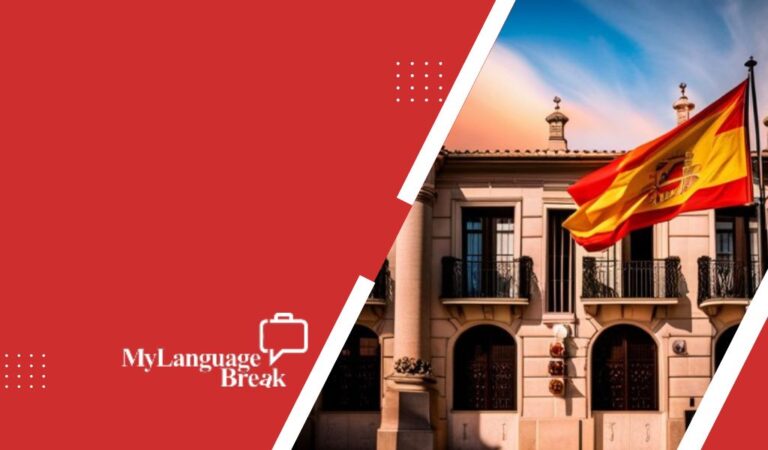
Master the Different Future Tenses in Spanish
Do you want to learn how to talk about the future tenses in Spanish? We will discuss the different future tenses in Spanish and how to use them correctly. There are three different future tenses in Spanish: the presente de futuro, el futuro simple, and el futuro perfecto. Each one of these tenses has a…

Best Resources for Learning Hebrew
Are you interested in learning Hebrew? Whether you are a beginner or an experienced speaker, there are plenty of resources available to help you improve your language skills. We will discuss the best sources for learning Hebrew. We will cover everything from online courses to textbooks to dictionaries. So whether you are looking to study…

A Comprehensive Duolingo Spanish Review: Pros, Cons, and Everything in Between
Duolingo is a popular online language learning program that has attracted millions of users from all over the world. It’s fun, user-friendly, and can be personalized to fit your needs. But is it the best way to learn Spanish? Here is a comprehensive review of Duolingo, pros, cons, and everything in between. Duolingo is a…

Understanding the Russian Alphabet: A Beginner’s Guide
If you are looking to learn Russian, one of the first things you will need to do is learn the Russian alphabet. This can seem daunting at first, but with a little practice, it will be easy! We will provide a beginner’s guide to understanding the Russian alphabet. We will discuss the letters and their…

Tips for improving your fluency in casual English conversation
If you\’re looking to improve your fluency in casual English conversation, then you\’ve come to the right place. In this article, we\’ll explore some tips for speaking casually in English, and we\’ll also look at some common expressions and slang words that you can use. Speaking casually is a great way to improve your fluency…

7 Great Online Tools For Learning Spanish
Have you ever thought about learning Spanish grammar and never forgetting it? You might just need to take advantage of some free materials to help keep your knowledge of Spanish grammar fresh. The seven learning materials in this article will help you easily understand the Spanish language while reading, speaking or listening to other native…
Atlas & Boots
The UK's most popular outdoor travel blog
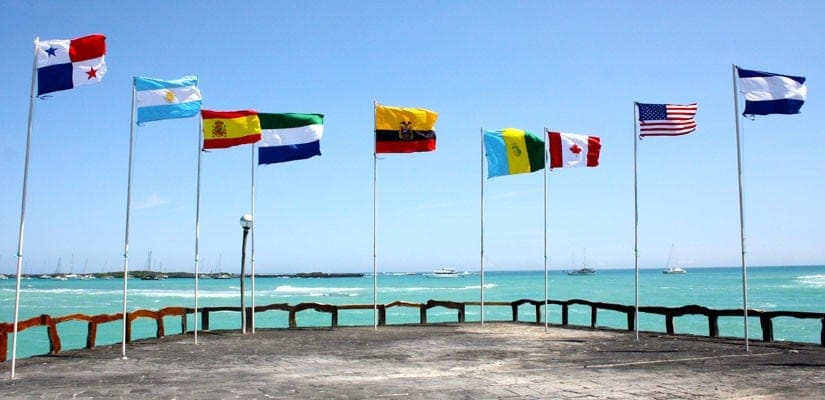
39 Spanish phrases I used most in South America
Like many Brits, I have never been great with languages . It’s not for the want of trying. Over the years I’ve made sporadic attempts at learning German, French , Greek and even Swahili, none of which have been very successful.
When arriving in South America I was a little nervous to say the least. My meagre Spanish consisted of a few words I had learnt from Spanish friends back in London, and most of those would only be appropriate at a football match. Luckily, I had Kia whose Spanish is far more advanced than mine.
Of course, I couldn’t rely on Kia all of the time. There would be times when she wouldn’t be by my side and more importantly I didn’t want to spend several months in South America not interacting with the people I met. I set about practising Spanish on language app Duolingo , writing down a few phases here and there and testing them out on unsuspecting waiters and hotel staff along the way.
However, I soon learnt that popular resources often don’t prepare you for life on the road in South America. While they were clearly setting the foundation for longer-term learning, Spanish phrases like “the girl drinks milk” and “the boy reads a book” didn’t arm me with the phrases and words I really needed every day.
The phrases below are those I used on an almost daily basis. They also helped drive home a few basic verbs and their conjugations. Four months on, I feel a lot more comfortable with my Spanish. I won’t be discussing failures of the global economy over morning coffee, but I can order my meals, reserve hotel rooms and get from A to B on a bus or two.
Of course, never forget to couple all of the above with a friendly greeting (hola, como esta, que tal) and a por favor, muchas gracias and winning smile :)
You might also like:


IMAGES
VIDEO
COMMENTS
If for your first time in Latin America you're really worried that you don't speak Spanish, combining Belize with an organised tour into Guatemala (Flores/Tikal) or Southern Mexico, such as Tulum could be a good way to beat that anxiety. Don't miss in Belize: Caye Caulker (pronounced 'key corker') and the Great Blue Hole.
A Little Spanish Goes a Long Way in South America. So if you are wondering, "Should I learn Spanish before travelling in South America?" - the answer is yes. I would recommend at least learning a very simple vocabulary, preferably one related to numbers, food, accommodation and the basics.
There are also many learn Spanish podcasts. 2. Take local classes. 1-on-1 Spanish lessons are inexpensive in many Latin American countries. A week of intensive lessons (usually 4 hours a day) costs as little as $100 in countries like Guatemala, Nicaragua, Peru, or Bolivia. Class-based lessons can cost even less.
Travelling Latin America Without Speaking Spanish. In 2015 my wife and I did a big trip down the length of Latin America — from Mexico City all the way to Patagonia (Excluding Brazil, which obviously isn't a Spanish speaking country). It took about 6 months and I knew next to no Spanish. I didn't bother picking up much along the way either.
Suriname: A Dutch-Speaking Nation in South America. Suriname is a small country located on the northeastern coast of South America. Despite being surrounded by predominantly Spanish-speaking countries, Suriname's official language is Dutch. This is due to the country's colonial history, as it was a Dutch colony until it gained independence ...
Here are some useful tips for dealing with altitude in South America: Take your first days slowly - When arriving somewhere with a high altitude (let's take Quito for example at 2800m), take a couple of days to acclimatise. Don't plan any strenuous activities and see how you feel. Get lots of sleep and stay rested.
Peru is a country located in the central part of South America, bordered by Ecuador, Colombia, Brazil, Chile, and Bolivia. The country is home to 38 million people, making it one of the largest countries in South America. The official language of Peru is Spanish so most people speak Spanish, along with a number of other indigenous languages, with over 84% of the population speaking it as their ...
512 posts. 107 reviews. 78 helpful votes. No spanish - south america too difficult? 10 years ago. Save. Hi, I am pondering going to south america later in 2014 for 2 months, but from my readings and comparisons to locations in Asia, i find the risk of theft/muggings higher and the level of english a lot lower. Maybe that is biased reading in my ...
In fact, you'll often pay $15-25 an hour for private Spanish lessons in Latin American countries. While that might not seem like much, it'll add up quick. Think about it…. $500-800 round-trip flight, $25-40 a night for an Airbnb, two hours of lessons a day at $15 an hour, and other living costs.
Depends what country you are but many countries English isn't widely spoken. You can still meet people in the hostels and find travel buddies, tons of people I met in the hostels were near fluent and can help you out with the spanish. Don't let no spanish stop you from travelling in South America though, it's such a beautiful place! 5. divermick.
Can you travel South America without knowing Spanish? Traveling Latin America without Spanish While it's very helpful to know some Spanish, surviving without it is entirely possible. You can even have a highly enjoyable trip without knowing the local lingo. If the language barrier is stopping you from going, just go!
Peru. Peru is one of the most travelled destinations in South America, with many people coming here for Machu Picchu, the ancient Inca city. There is so much to see here, from Lake Titicaca, which Peru shares with Bolivia, to the Nazca Lines - large ancient geoglyphs in the Nazca Desert. Lima is Peru's capital.
Ended up loving south america so much that I went to Spanish school to learn fast forward 4 years I'm back in central america learning more spanish. I met people who traveled the whole of South America only being able to say gracias. Its much easier than say China to travel without the language. Actually a lot of people here speak English not ...
One unique thing about travelling this region is that a good percentage of Central and South American countries uses one language for communication - Spanish.Unlike Europe or Southeast Asia where each country has its own unique language and dialect, being able to speak conversational Spanish will get you very far in communicating around South America, and in fact the entire Latin American ...
South America possible without Spanish. I don't want to do the most touristy stuff, but from what I hear, South America is more difficult without knowing some Spanish. Would be going by myself as a 29 y/o male for a solo trip for 2 weeks. Aiming for Peru, Columbia, Chile. Hoping to do hostels and hiking and landscape sigh seeing. Also, partying.
About South America. South America is an active adventurer's dream. Dense Amazonian rainforest, epic trails such as Maccu Picchu and the Inca trail, the Galapagos Islands, beautiful waterfalls and amazing wildlife. If you haven't been, put South America on your bucket list now. Patagonia is particularly famous for hiking and trails, and ...
The majority of countries in South America may be Spanish speaking, but that doesn't mean they speak the same Spanish. Travellers are often stumped when they find the word they learnt in one country means something entirely in the next country. ... It's a cheaper way to travel than taxi, without the crowds of a bus. Flota: If you're ...
Colombian Spanish is one of the most varied we could hear all over South America. Its unique use of words, colourful expressions, and especially the slang of Colombia make it fun to listen to natives from different regions. We don't think Colombian is the easiest form of Spanish to learn though.
There are a ton of great Spanish schools across South America, many of them aimed at backpackers! Book in for a crash course at your first destination and get learning! It is an investment but one you definitely won't regret! Related: Spanish speaking countries in South America. 2. Always carry Imodium
Budget Restaurant per person: $5.00 - $8.00. 4. Ecuador. Ecuador is not only one of the cheapest countries in South America, it is one of the smallest too. Yet despite its size, it offers every type of climate and a travel experience for all kinds of adventure seekers.
Without trying to be melodramatic, I promise that if you start speaking even the most basic Spanish travel phrases when you are backpacking in South America, you would fall in love with this language; for Spanish is a passionate dialect. Spanish words and phrases cover almost every emotion; some of the feelings that can be described eloquently ...
BUENOS AIRES, ARGENTINA. Indeed, the Paris of South America. Buenos Aires is the safest city on the continent and the perfect destination to learn Spanish for many tourists. This cosmopolitan city mixes grand, French and Italian-style houses, a penchant for tango, and carnivorous decay in its embrace of a good steak.
38. Excuse me / pardon / I'm sorry. Disculpe / perdón / lo siento. 39. The hotel is on the right / left / straight on. El hotel está a la derecha / izquierda / recto. Of course, never forget to couple all of the above with a friendly greeting (hola, como esta, que tal) and a por favor, muchas gracias and winning smile :) The Spanish phrases ...